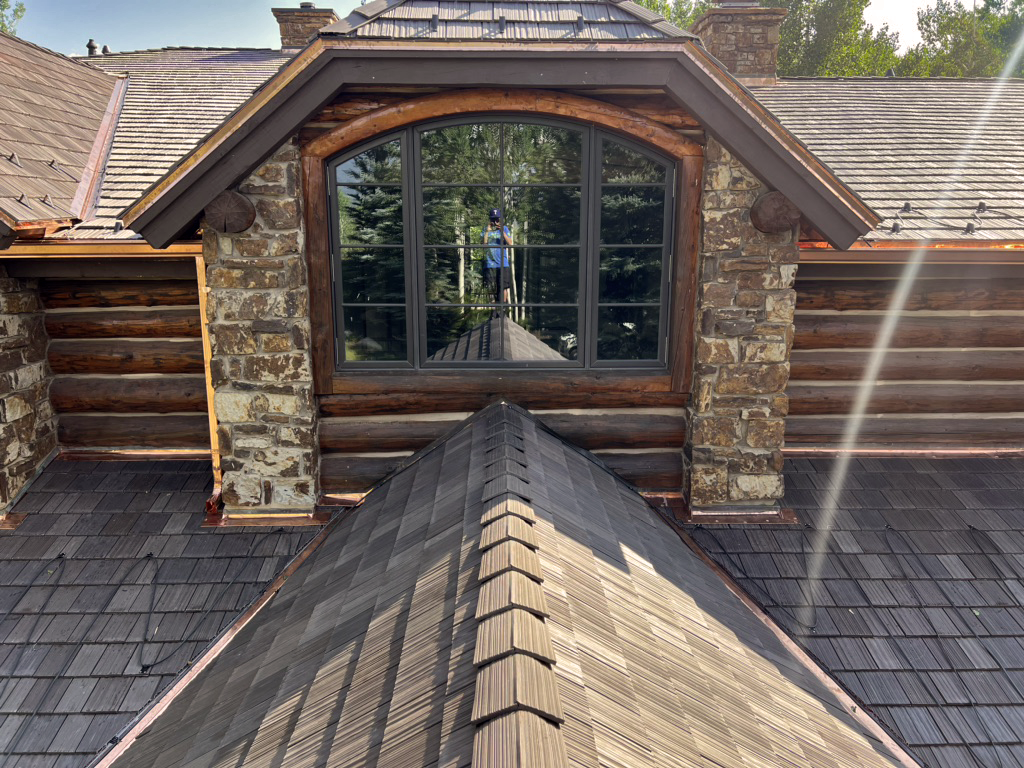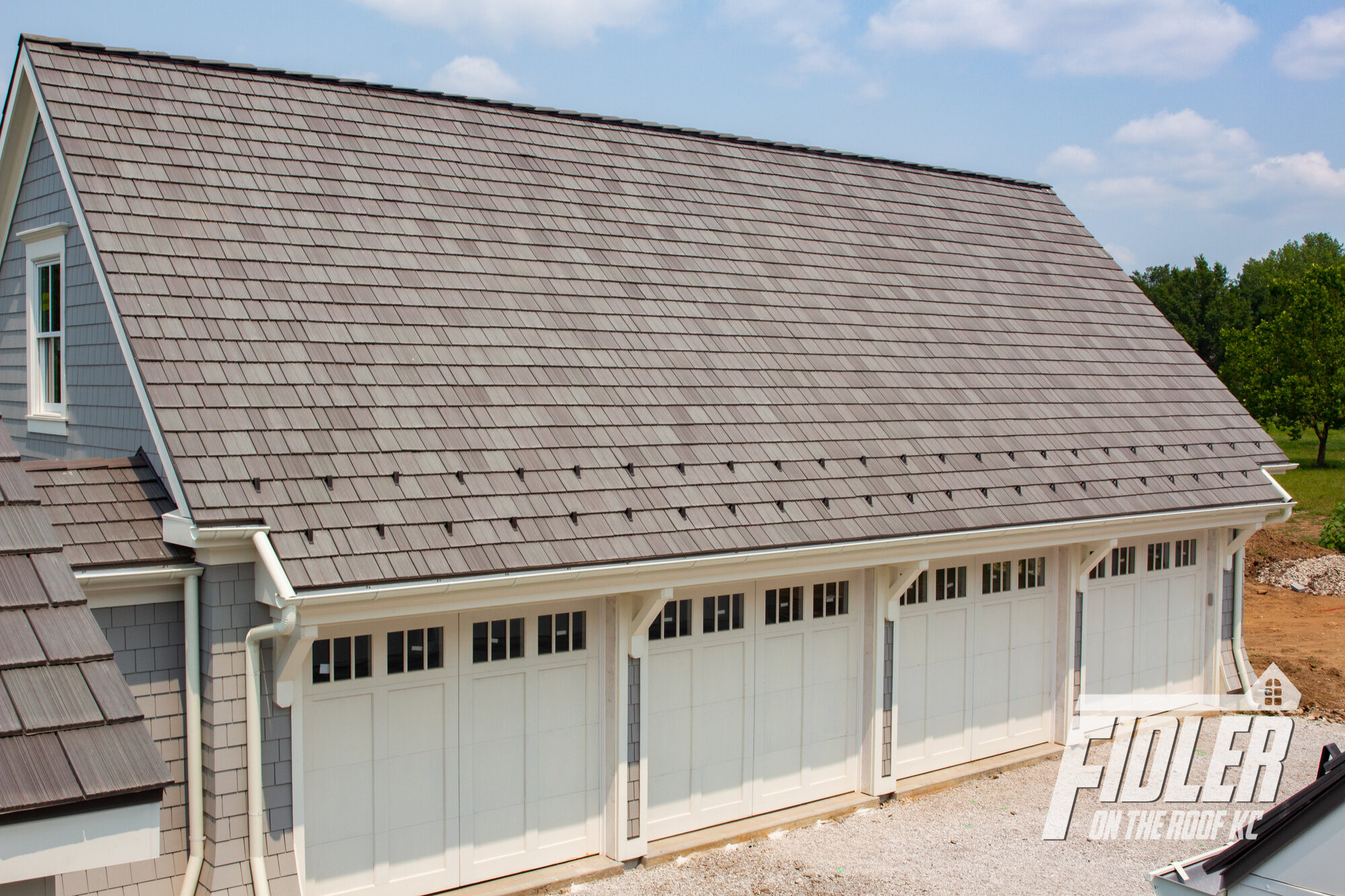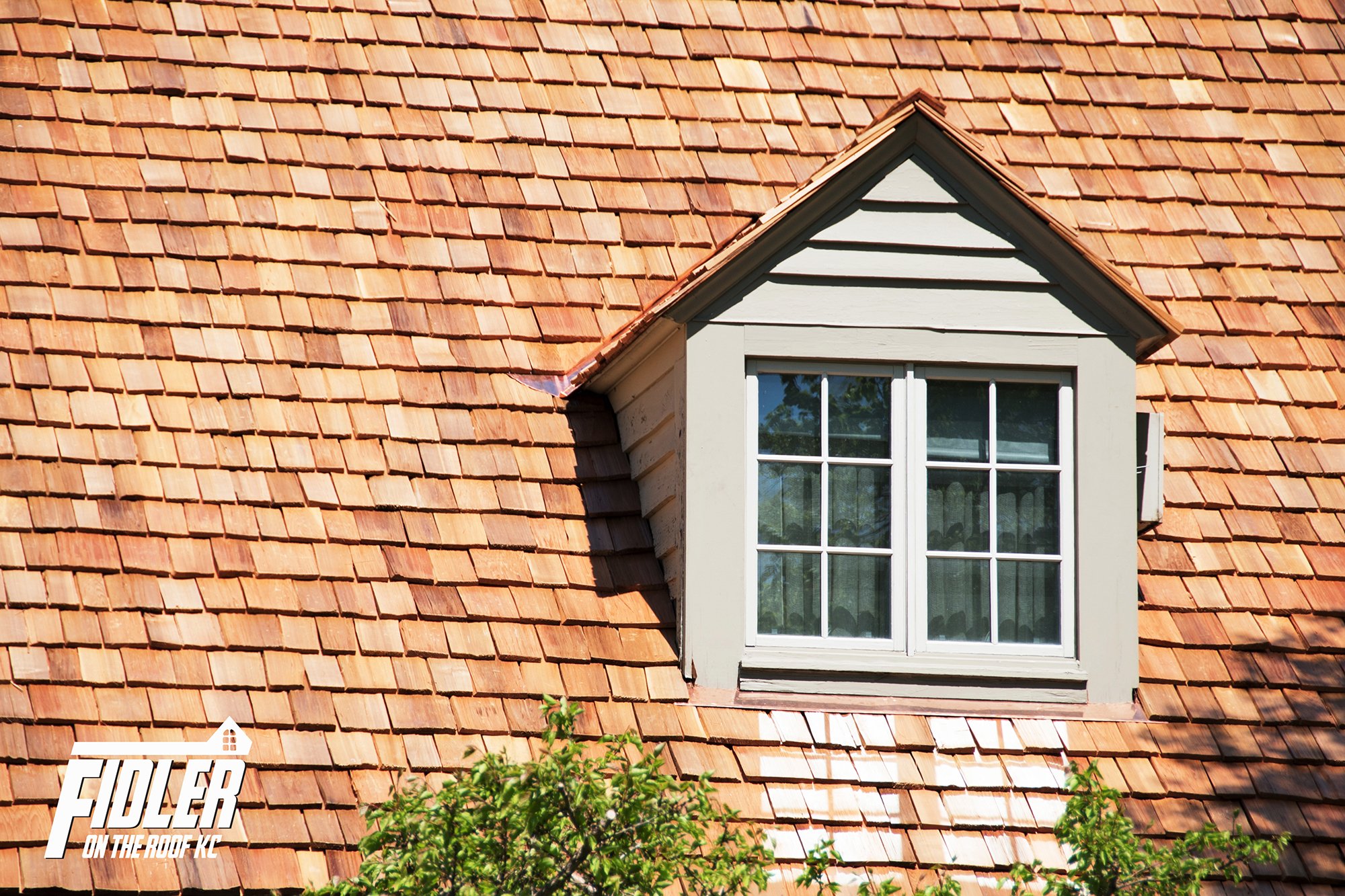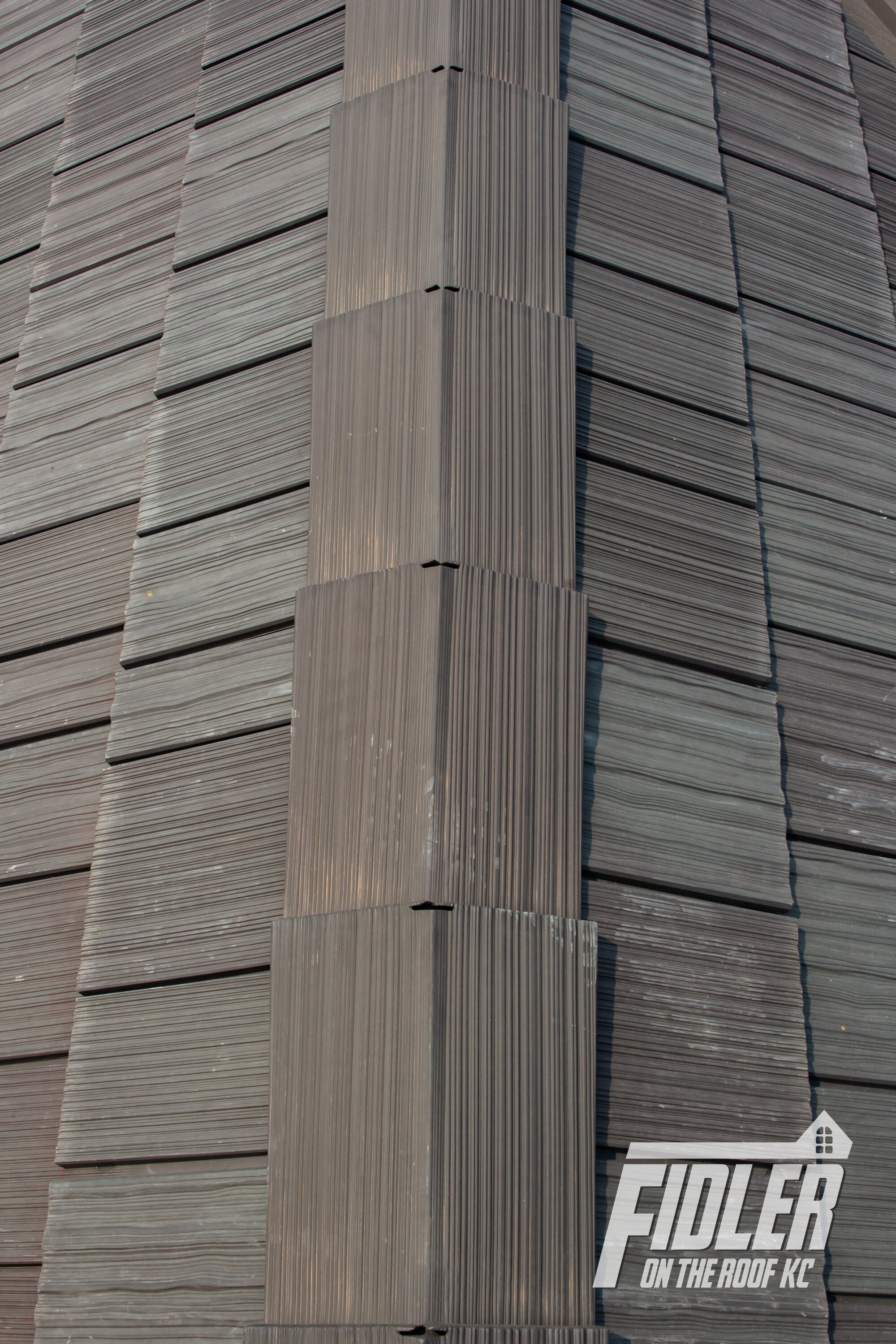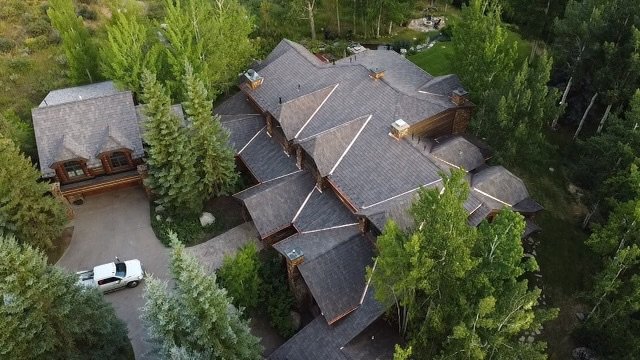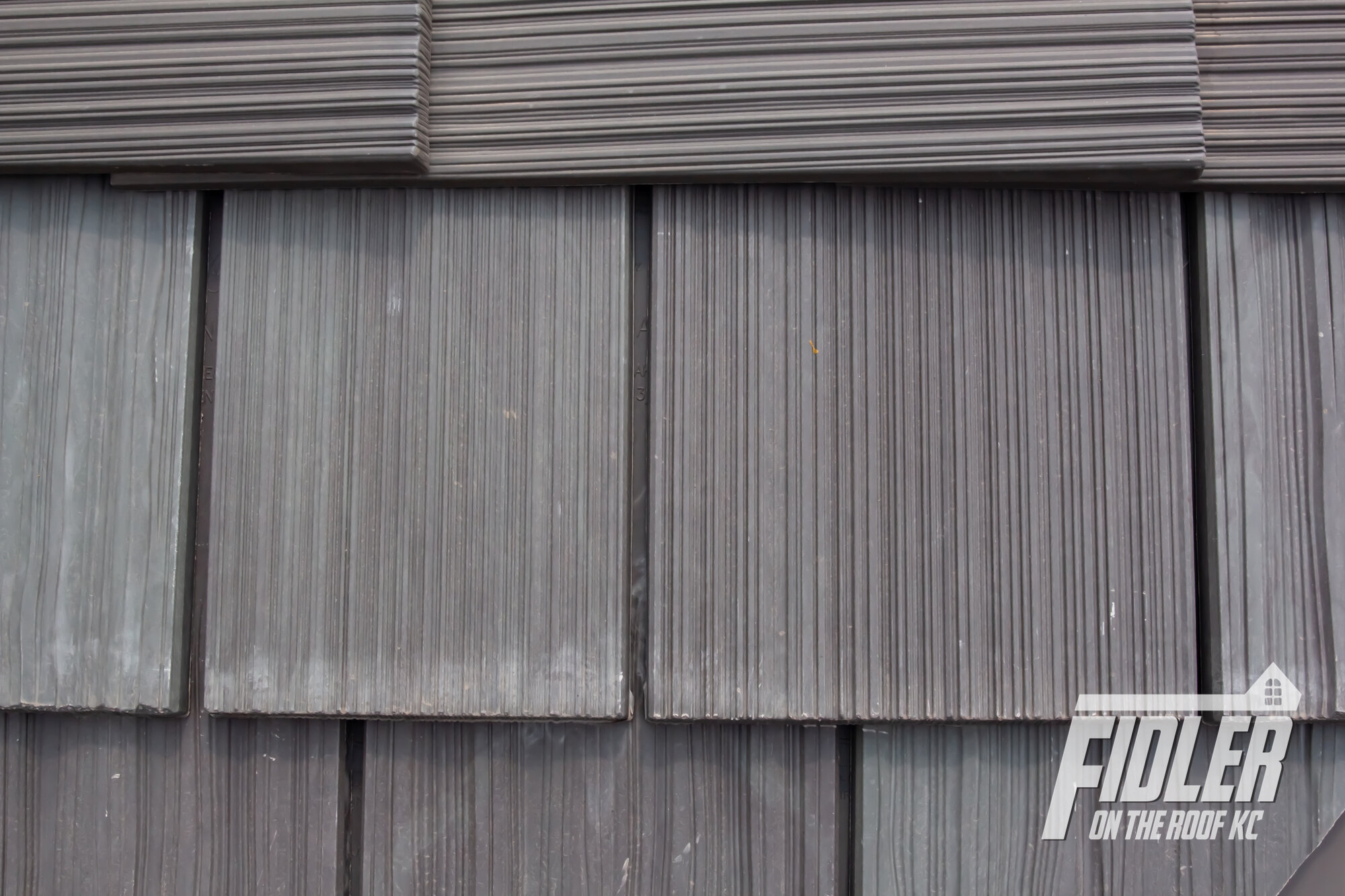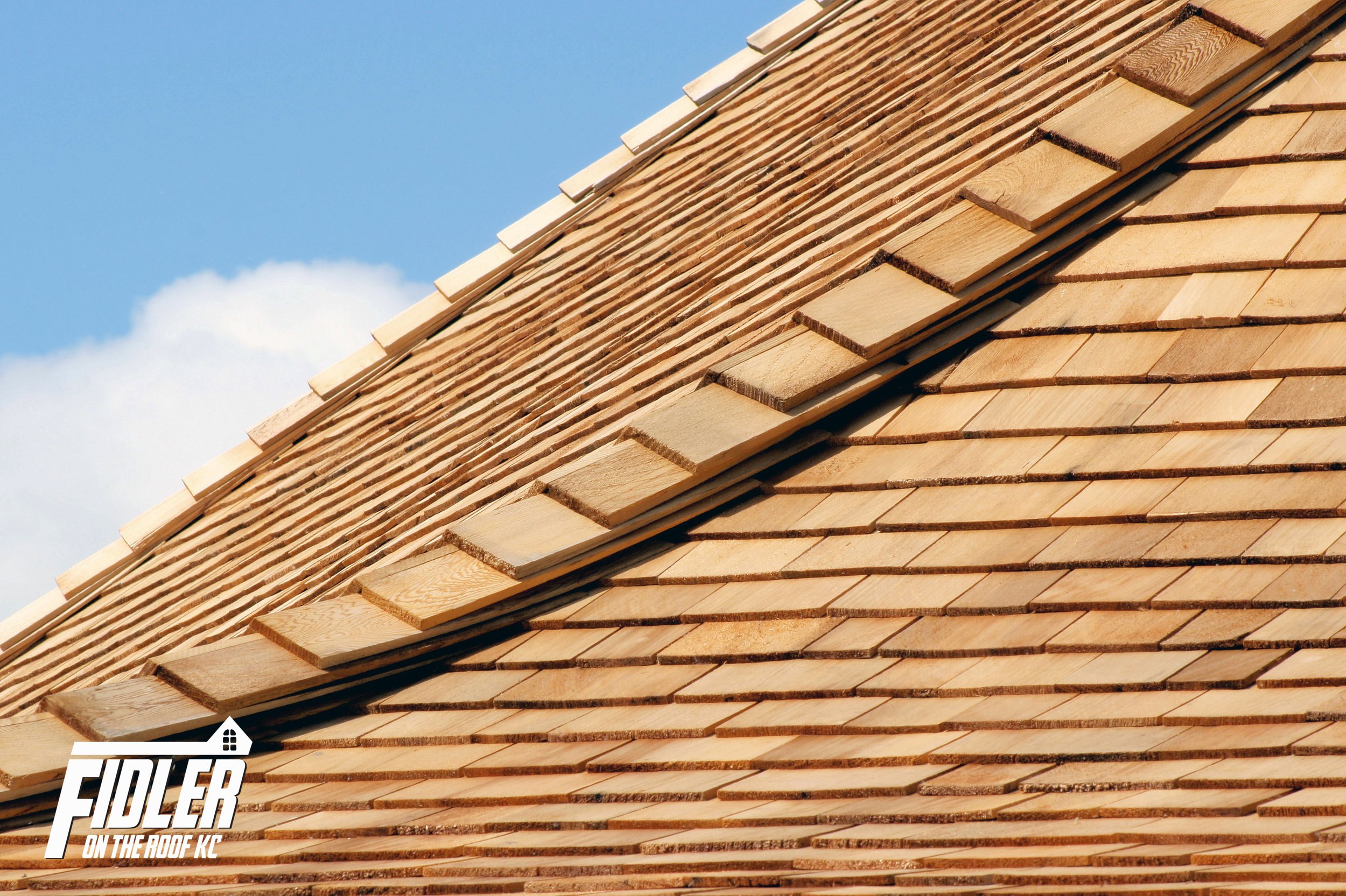Roofing styles and materials
Fidler on the Roof KC can provide the customized roof you’re looking for, whether it’s made of tile, stone or composition. Contact us for a free estimate.
From traditional composition shingles to premiere tiles, Fidler offers all the options in greater kansas city.
Fidler on the Roof KC is skilled in working with diverse roofing materials, including clay tile, slate, stone-coated steel and others. Don’t see what you’re looking for? Give us a shout and explore all the options. Click on the images below to learn more about each roofing type.
What type of roof should you choose?
When it comes to choosing a roof, there are three basic considerations: budget, personal preference and engineering.
Most roofing types can be equally impact resistant. There are multiple durability grades for each surface, ranging from 1 to 4, with 4 being the most durable. That means a grade 4 composition roof is more durable than a grade 3 tile roof. So it’s not a matter of materials, it’s a matter of the durability rating of the type of roofing you choose.
With all things being equal, you can have the type of roof you want. Budget is a factor for everyone, of course, or we’d all have gold-plated roofs. In general, composition roofs are the most economical. However, we encourage you to price out the options. You may be surprised.
Can my roof support it?
The engineering of your home is another factor. Not every home can support every material. Slate and cement materials, for example, can weigh 10 pounds per shingle. A house must have been constructed with this weight in mind. Fidler on the Roof KC can assess your home’s ability to support the weight of differing roofing materials.
If your house cannot support the type of roof you want, there are a couple of options. We can send a structural engineer to bid on upgrading your home’s roofing support system. If this is not possible or desired, we can recommend alternatives. For example, faux tile and slate roofing (made of durable plastic instead of stone) are options, as is stone-coated steel. It’s not often that your make decisions about roofing, so take time to explore the possibilities.
WHICH ROOFING STYLE IS FOR YOU?
Roofing Styles Infographic from Fidler on the Roof KC - Kansas City
Composition Roofing
Composition roofing, also known as asphalt shingles, is the most common type of roofing in the United States. The name “composition” comes from the term composite, meaning the blending of materials to form a whole. Despite their widespread use, composite shingles can be distinctive. They’re available in a wide variety of styles, colors, shapes and thicknesses. In terms of wear and tear, high-quality composite shingles can withstand the elements as well as any other type of roofing. They’re also moisture resistant, which deters the growth of mold and algae. And of course they’re fire resistant.
For those who have cost as one of their primary concerns, composite roofing is excellent value. In addition, no special structural support is needed. With clay, slate and cement tile, reinforcement may be necessary. If composite roofing is your choice, we’re pleased to share a wide variety of options. In addition to viewing different colors below, you can also use a tool from Owens Corning called DesignEyeQ that allows you to upload a photo of your home and see how different colors will look.
Benefits of composition roofing
Composition roofing offers some of the most budget friendly options.
Composition roofs can be recycled at the end of their lifespans.
Composition roofs can withstand the worst of the elements, including hail, wind and rain.
Composition roofs can be customized in an extraordinary variety of textures and colors.
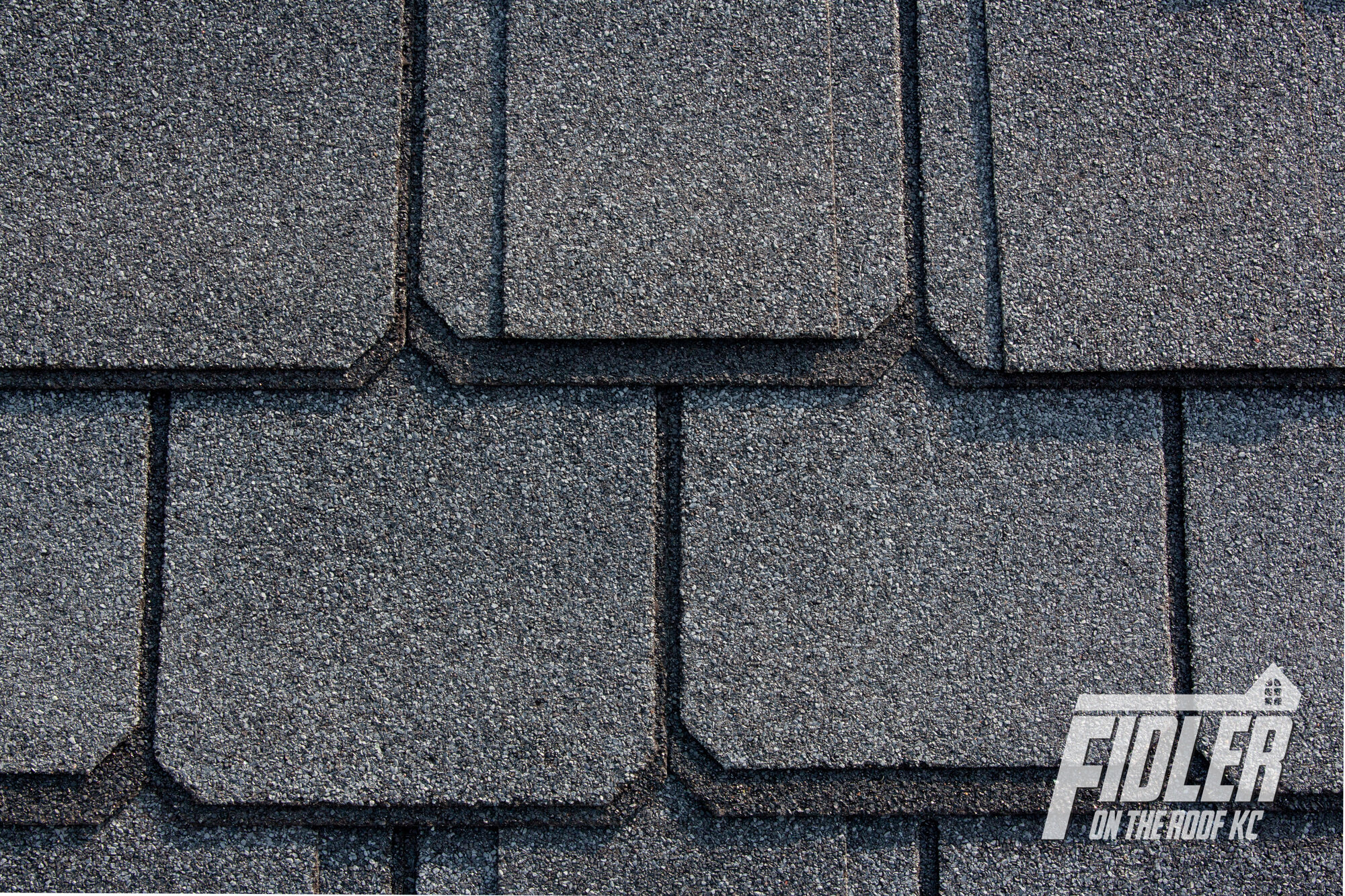
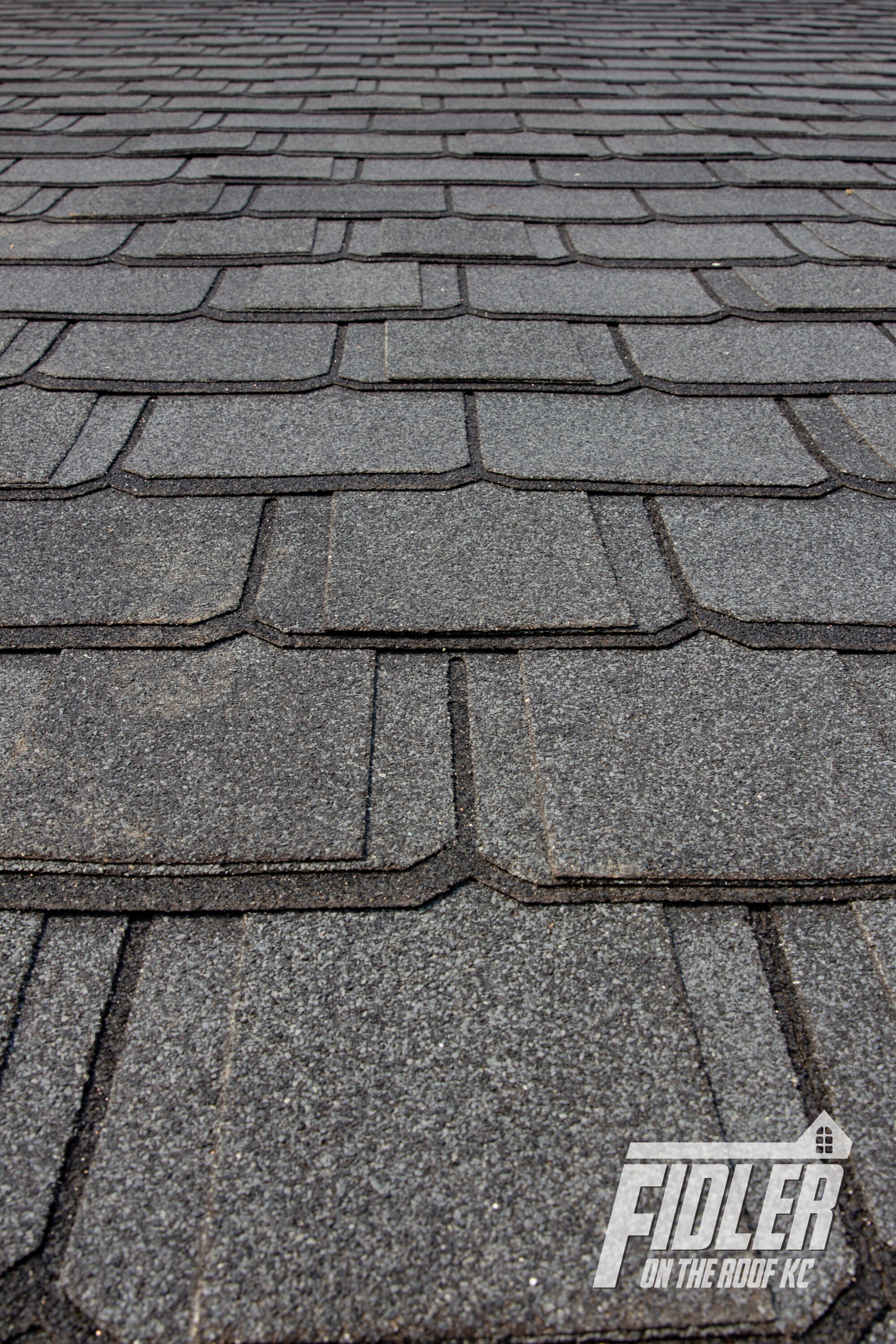
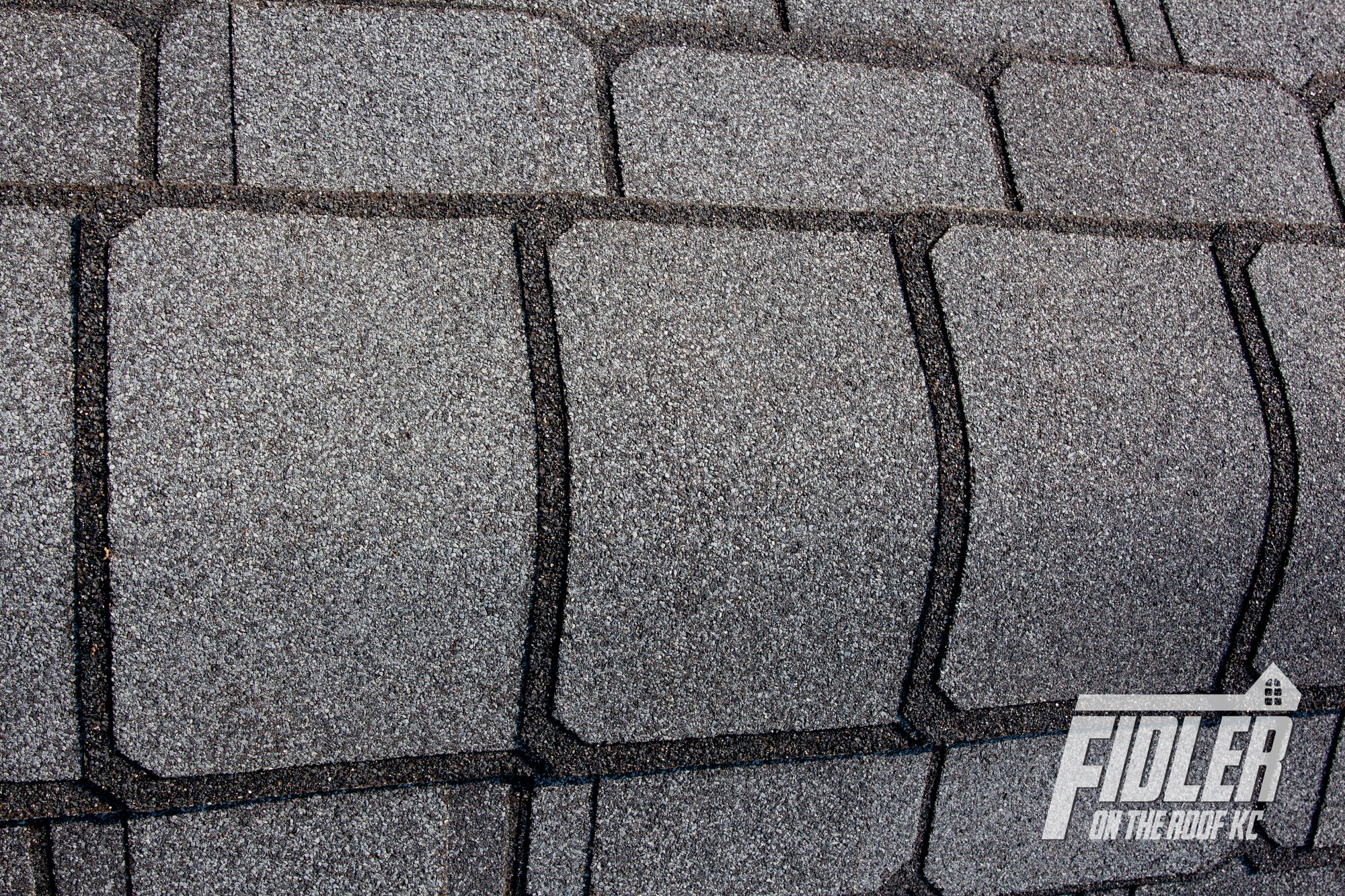
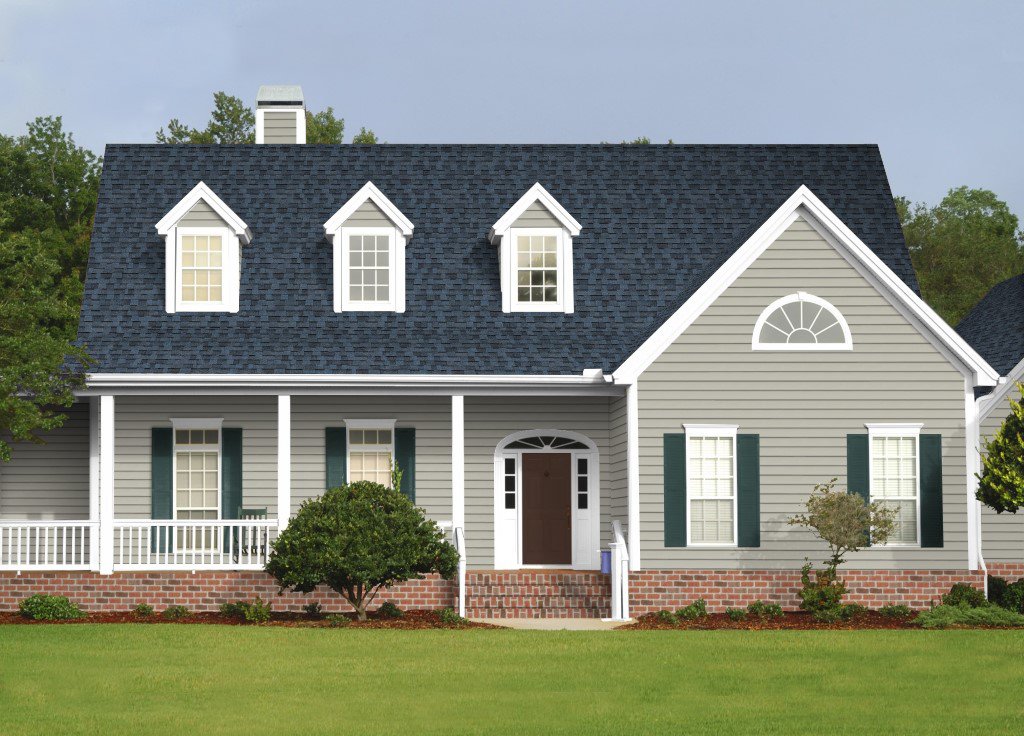
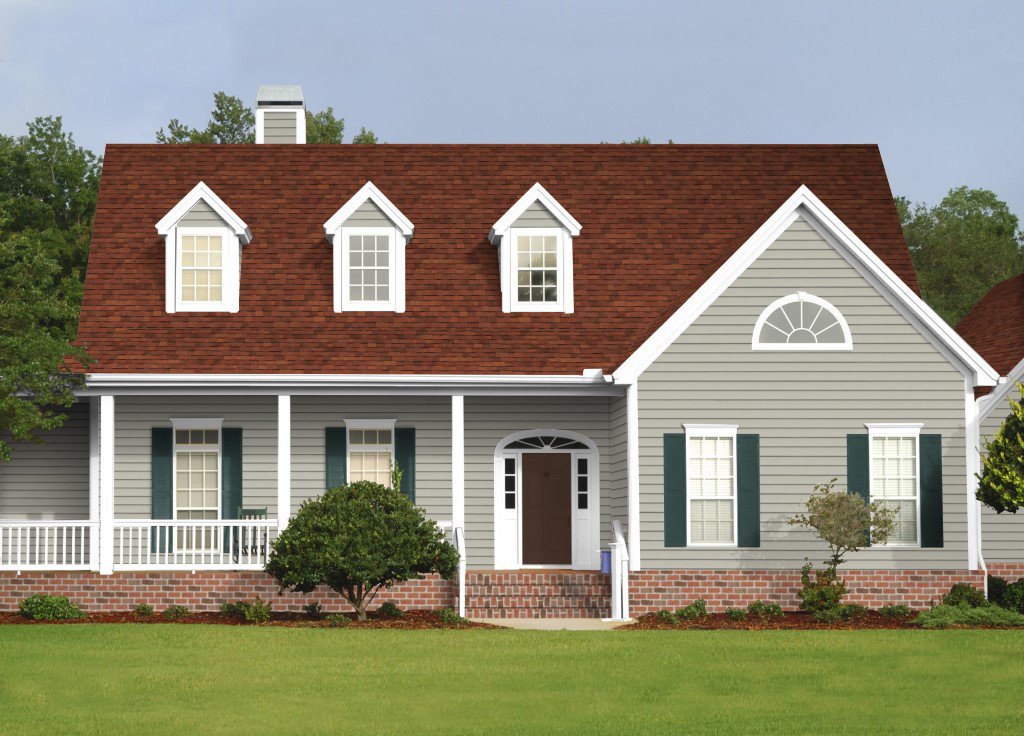
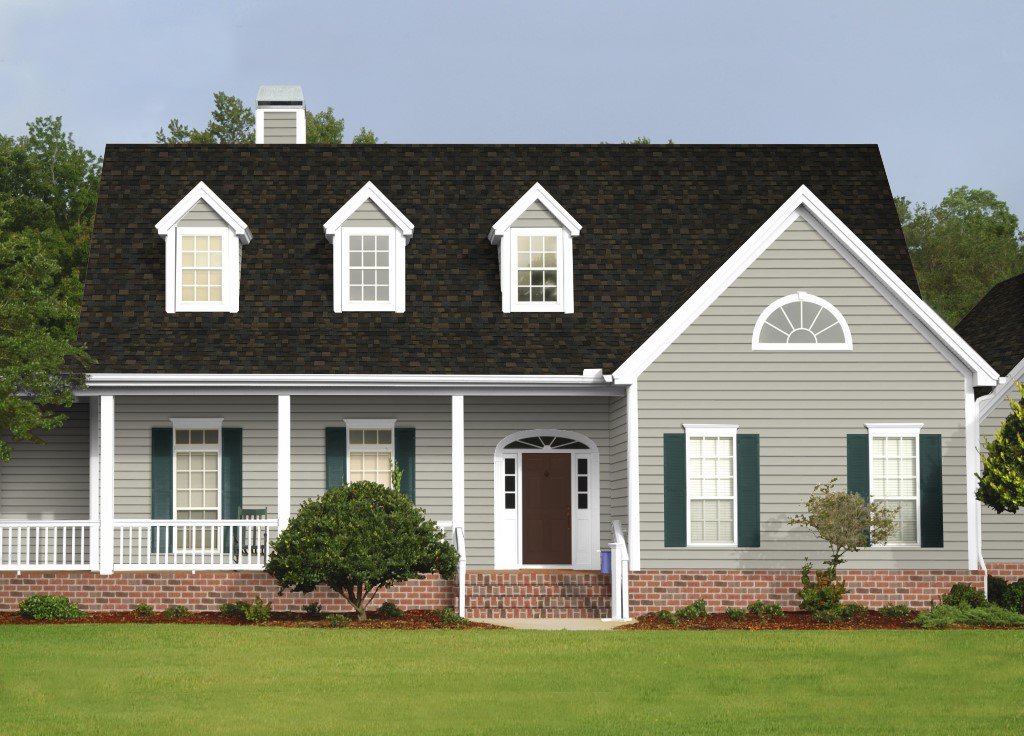
CLAY TILE ROOFING
Clay tile roofing has been used around the globe for centuries and is still the default roofing material in much of the world. In the United States, it is usually selected for its aesthetic “curb appeal” properties or to match an existing architectural theme (for example, a Mediterranean style). Once made by hand, clay tiles are now manufactured with precision. These tiles create a distinctive roof profile and can be customized in numerous ways, with aesthetics ranging from contemporary to historical. We’re pleased to offer options from several quality manufacturers, including Ludowici. Styles include barrel, flat, French and Spanish.
Benefits of clay tile roofing
Clay tiles often outlast the surfaces they’re attached to and can last a century (or more) with proper maintenance.
Clay tiles are energy efficient and have insulating properties, regulating cold and heat.
Clay tiles are enduring, standing up against sun, wind, rain, hail and seasonal temperature changes. They are also fire resistant.
Requirements for clay tile roofing
A home’s roofing structure must be built with the capacity to support clay tile. Some homes were not built with the capacity for clay, concrete or clay surfaces. An engineer can evaluate your roof to determine its strength. If your roof cannot sustain heavy materials, other options are available. For example, stone-coated steel is a lightweight option that provides an appearance similar to clay or slate tile.
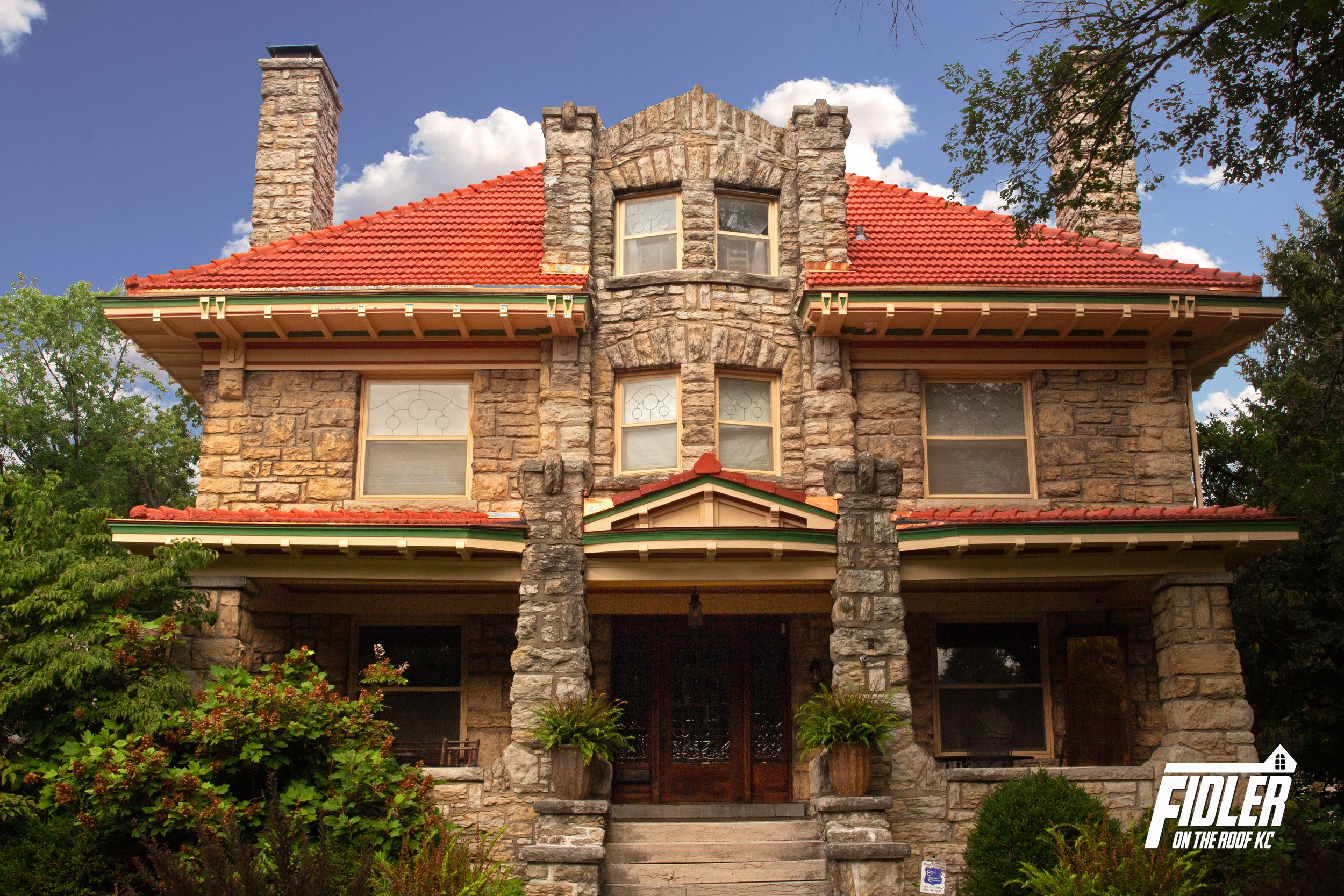
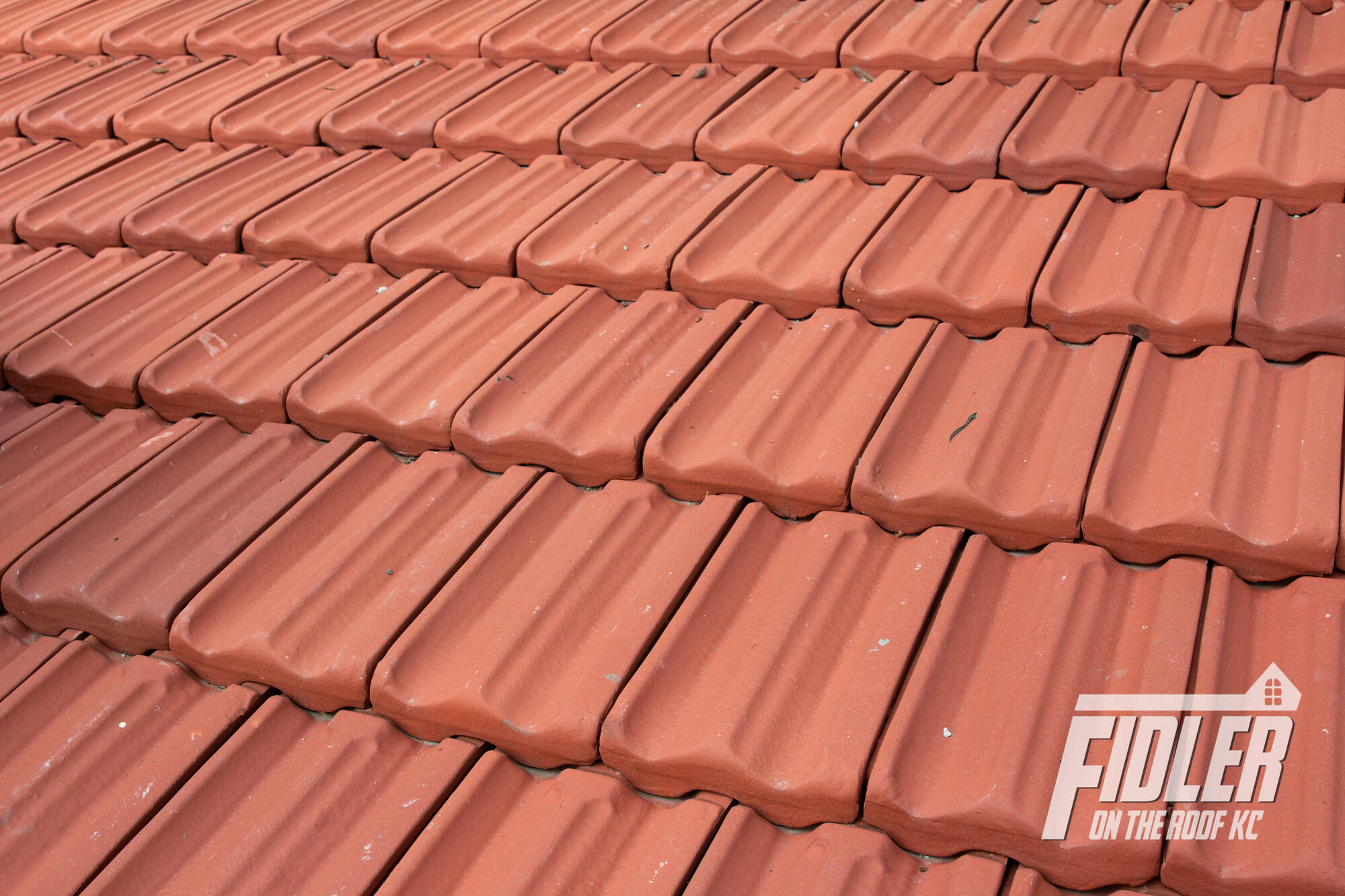

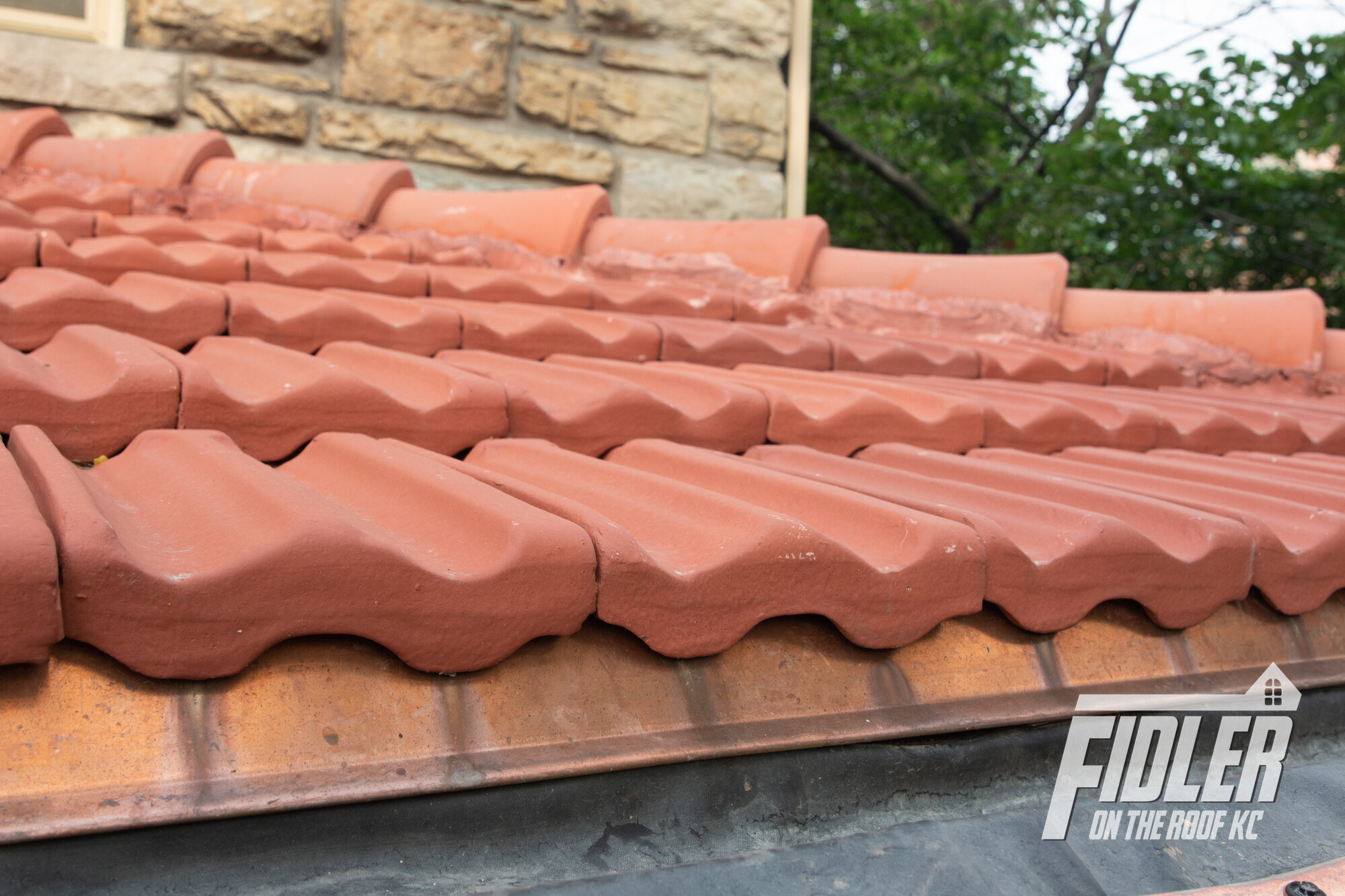
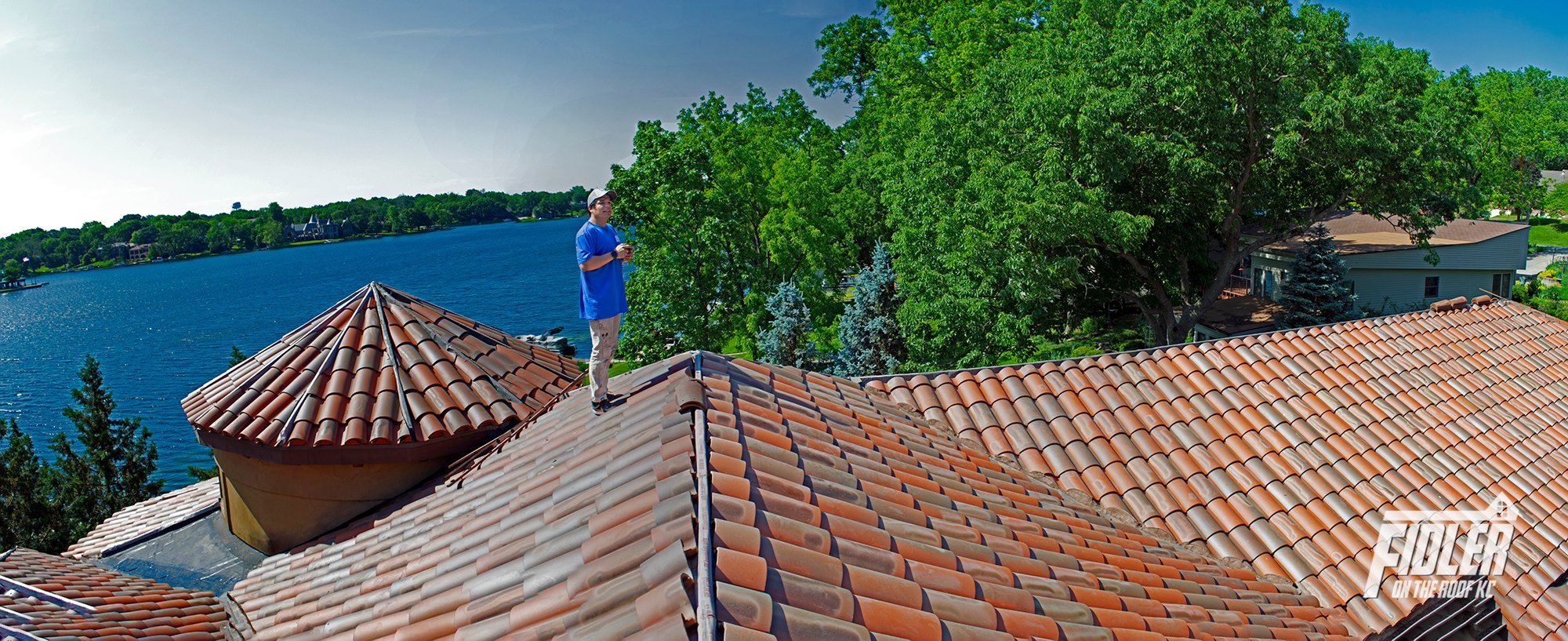
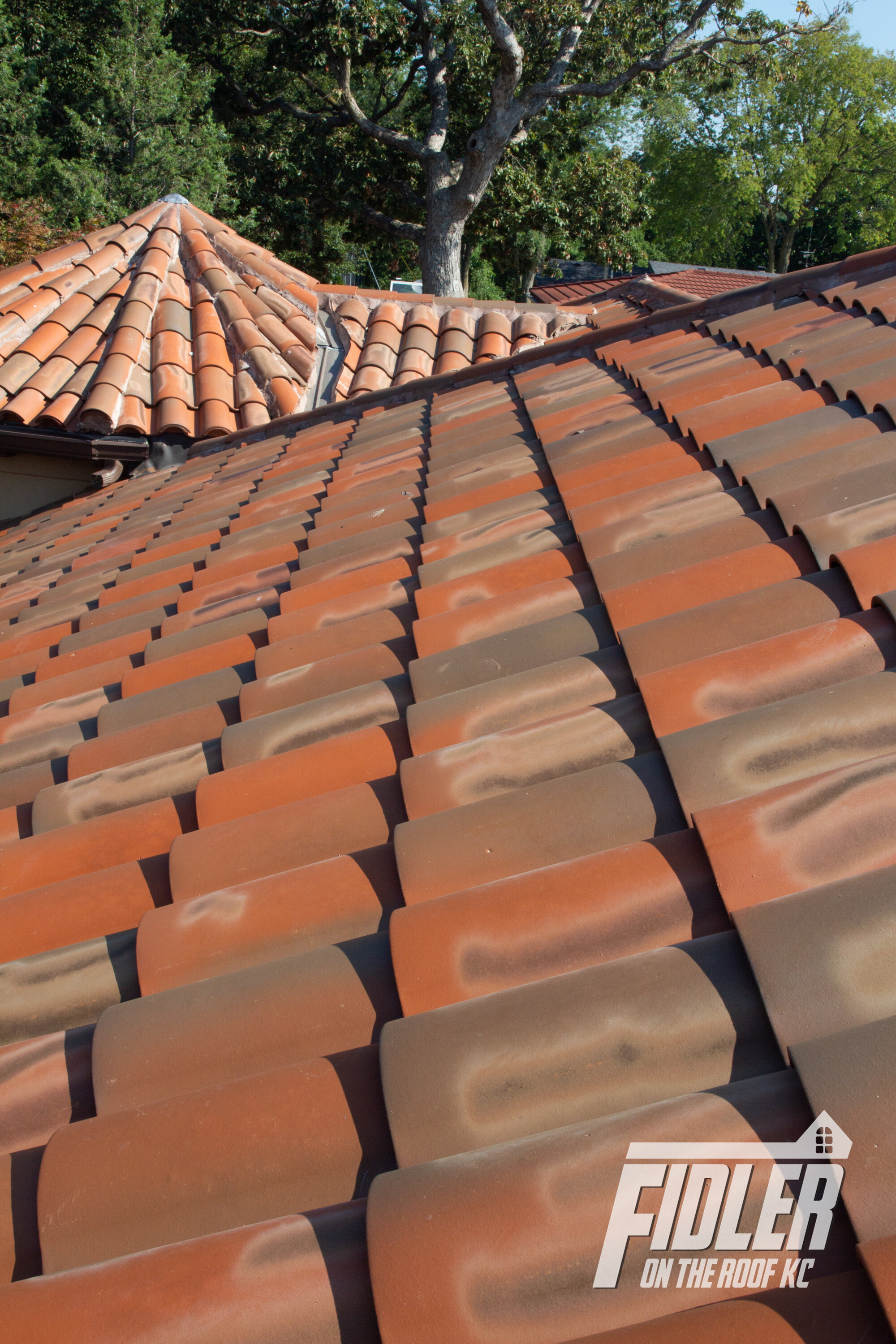
CONCRETE TILE ROOFING
Concrete tiles are made from natural materials engineered to create a wide variety of colors and textures. They’re durable, energy efficient and striking in appearance. You may not be familiar with these tiles, but you’ve certainly seen them. They’re often mistaken for slate or stone. Sleek and stylish, concrete roof tiles come in diverse varieties ranging from traditional and vintage to modern. Because they are precision-manufactured, concrete roof tiles have essentially unlimited design options. Colors also vary widely. In addition to its aesthetic appeal, concrete tile is among the most durable of roofing surfaces. The raw materials used to create these tiles also make them an eco-friendly alternative to oil-based roofing products. They’re made of sand, cement, water and iron oxide (which influences color). These tiles’ durability also means they’ll last for decades and won’t contribute to landfill waste anytime soon.
Benefits of concrete tile roofing
Concrete tiles are built to withstand the elements and can last 50-100 years. They are immune to pests, resistant to hail and can withstand winds of 125 mph. They are also fire resistant.
Because concrete roofing tiles are manufactured, there are virtually unlimited style options. Styles include flat, interlocking, barrel, Spanish, French and mission. The result is dynamic curb appeal.
Concrete tiles are an eco-friendly option made from organic materials: sand, water, cement and iron oxide (for color).
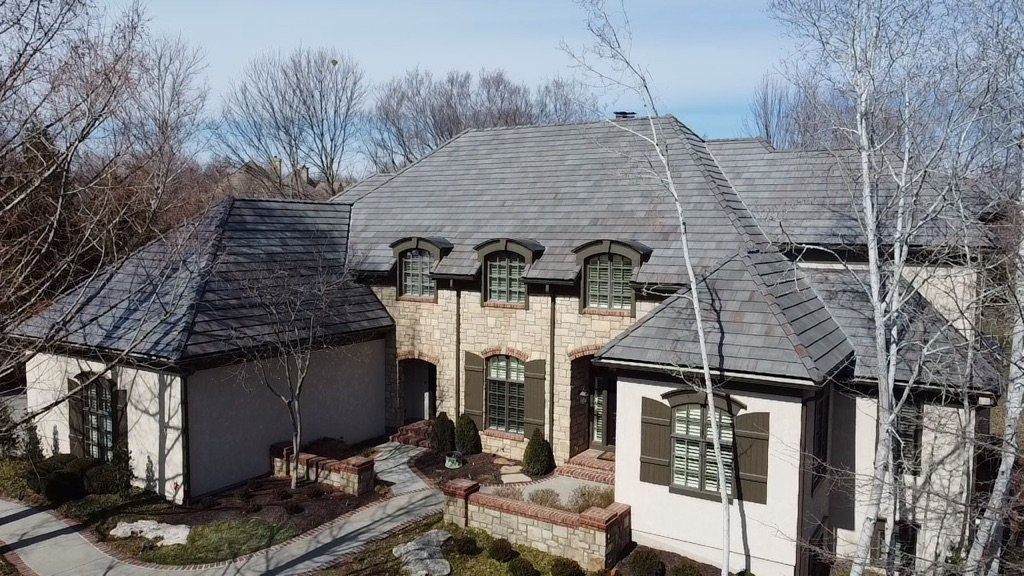
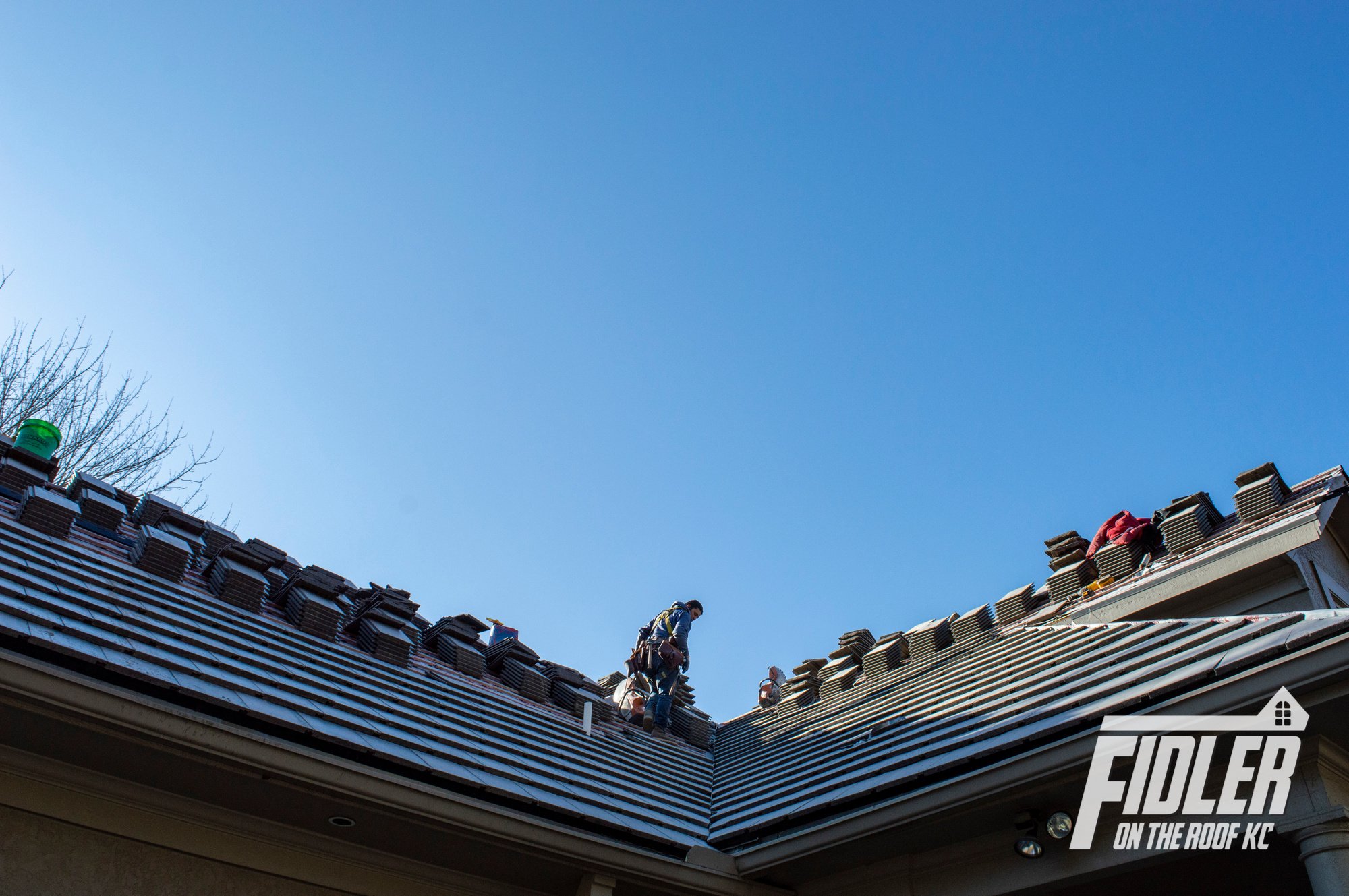
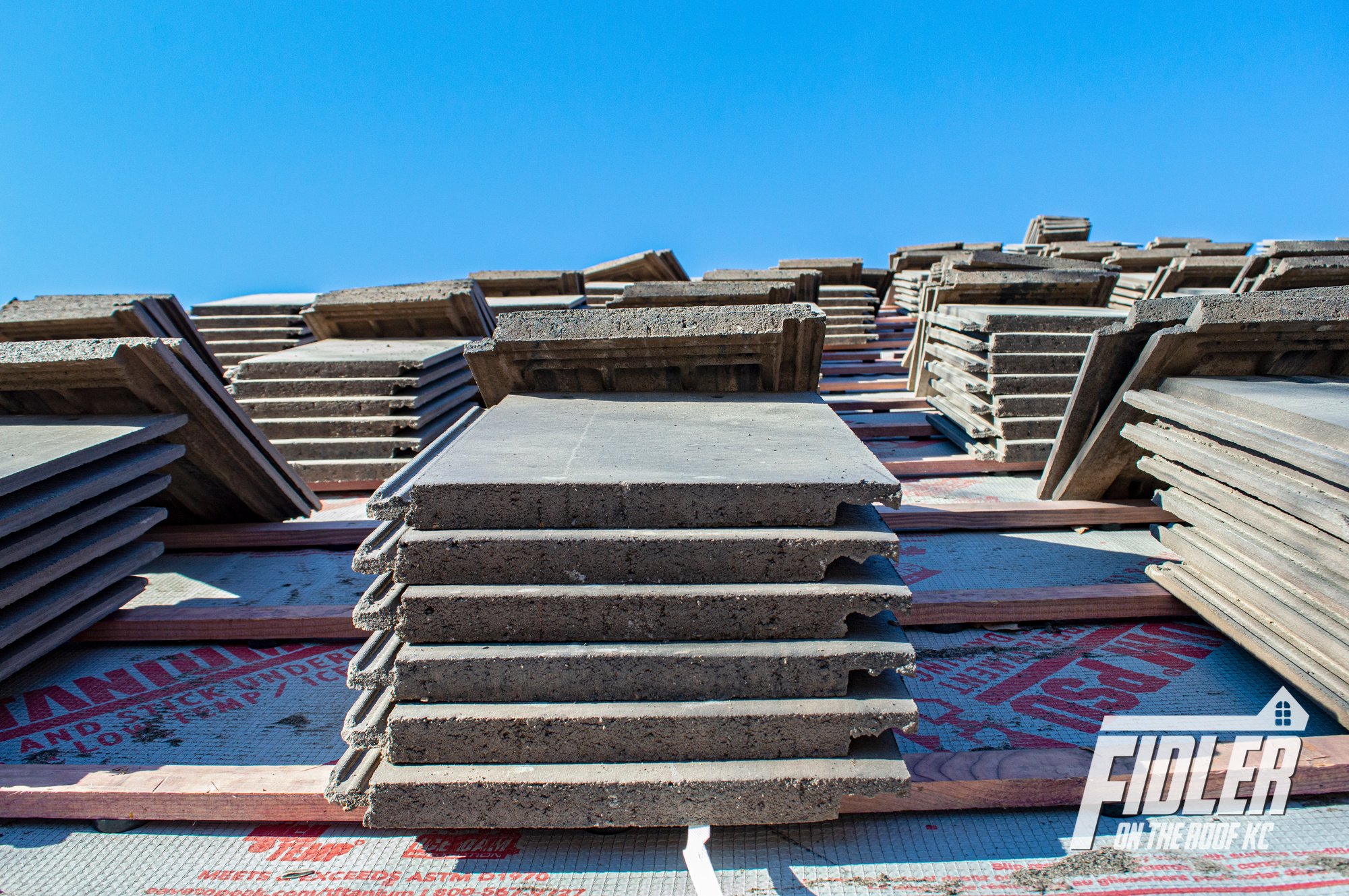

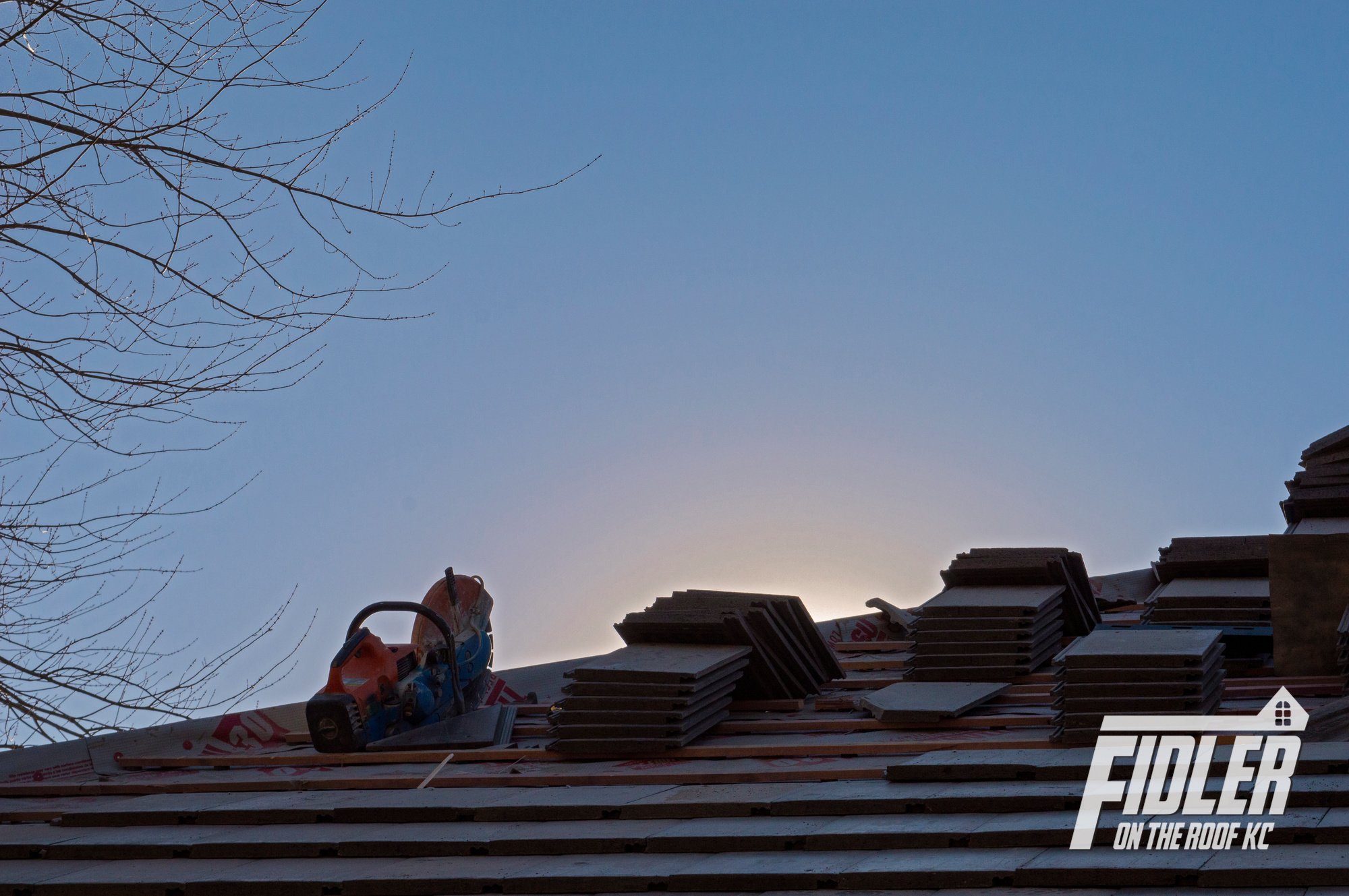
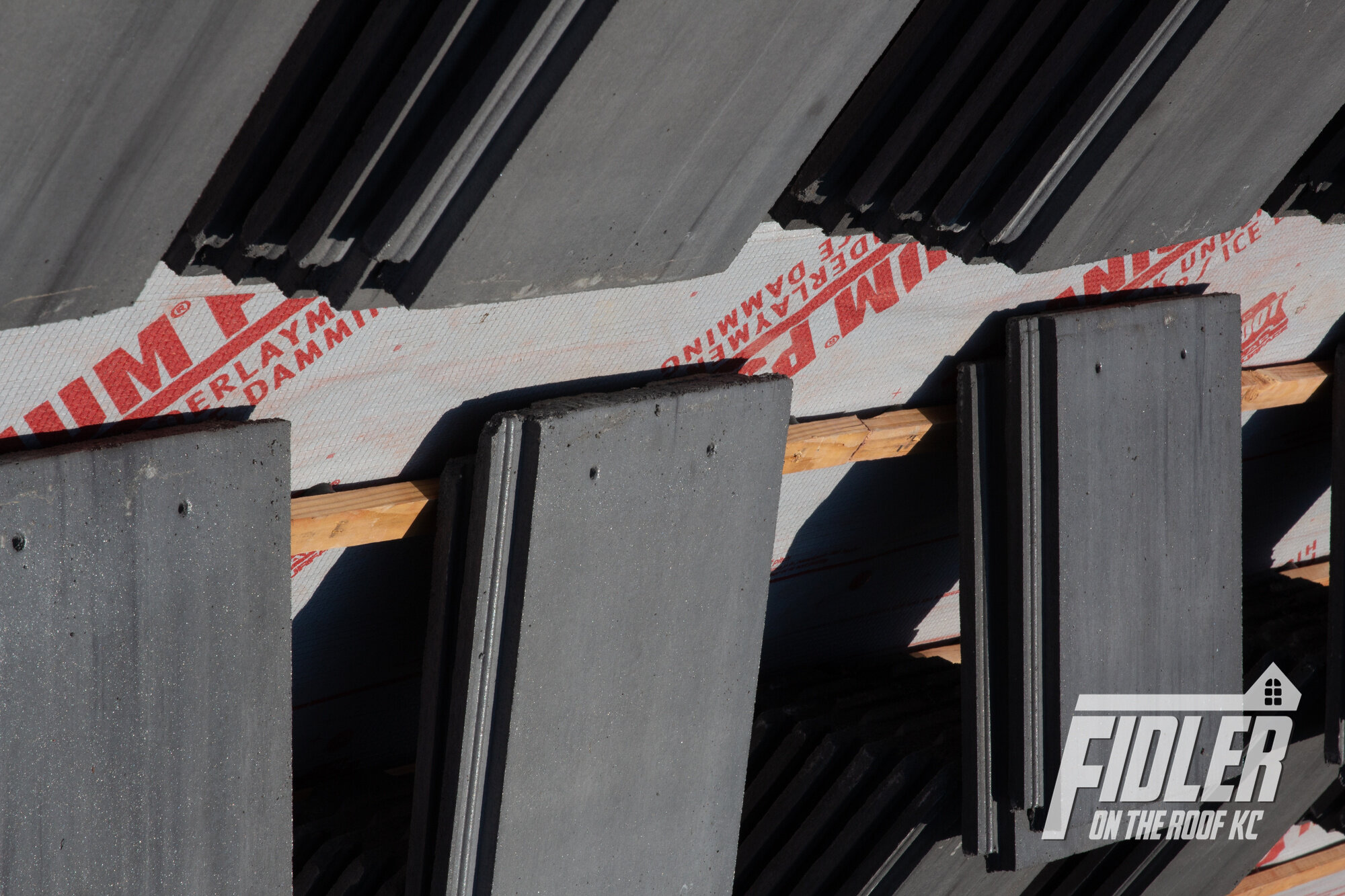
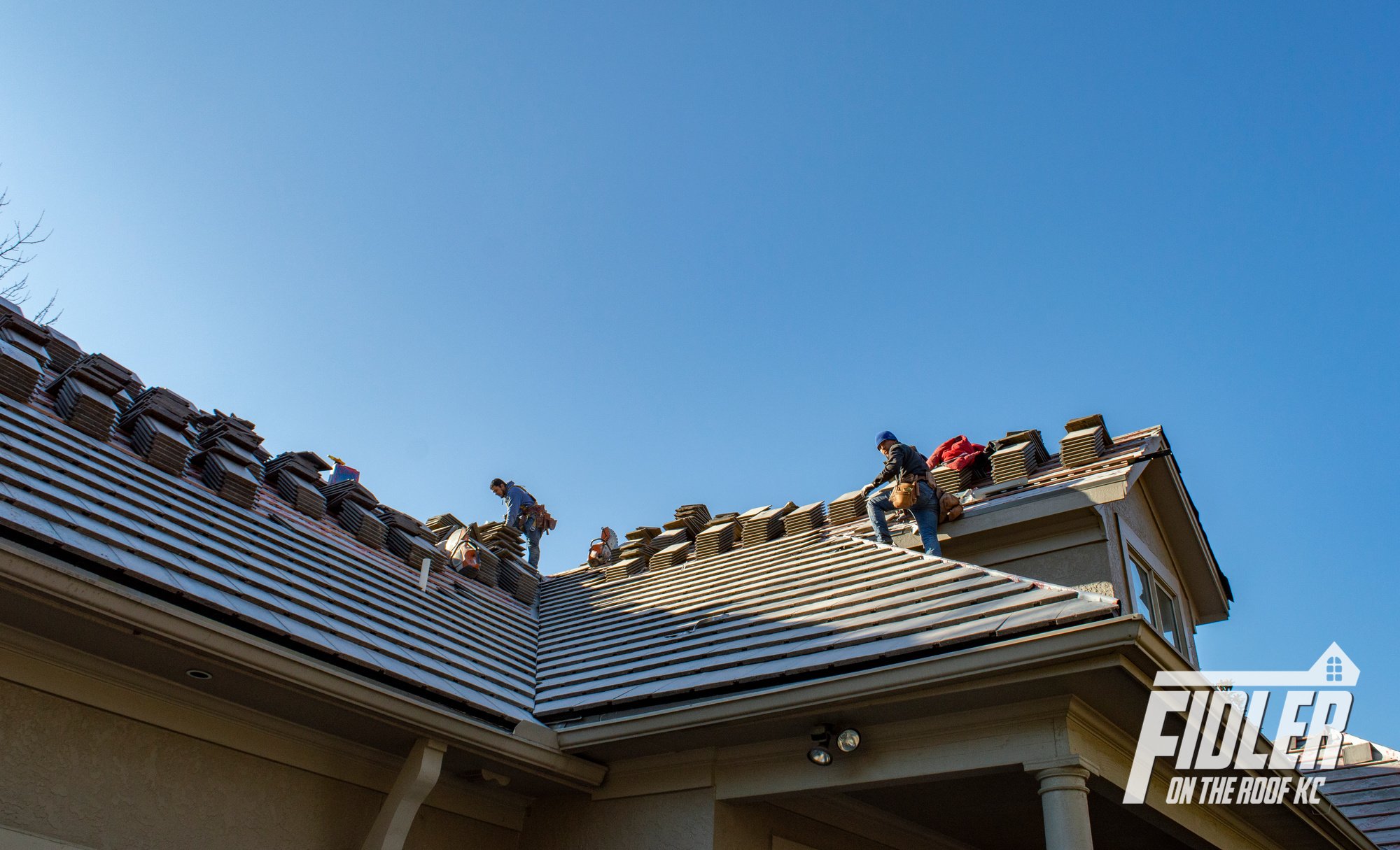
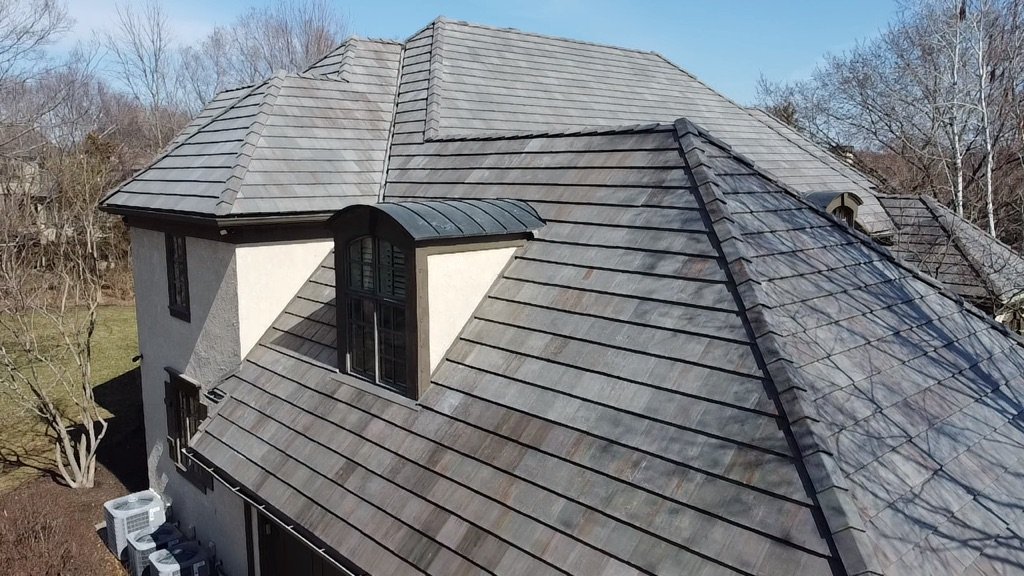
SLATE TILE ROOFING
Slate, another natural surface, provide homes with an organic, reflective beauty. This durable material comes in a variety of colors, thicknesses and textures. We use quality slate products from manufacturers including Ludowici. You can’t get any more natural than slate. It’s quarried – not manufactured – and its composition causes it to readily split into thin slabs. Slate is the result of pressure and heat that transformed existing rock. It naturally occurs in varying colors due to variances in its chemical composition. Colors include black, grey, green, red and even purple.
Benefits of slate tile roofing
Slate tile roofing is among the sturdiest, lasting a century or more with proper maintenance. It stands up to weather, mold and pests. It’s also fire resistant.
Slate tile comes in a wide variety of colors and styles. Often, these are mixed on the same roof to create unique patterns.
Slate tile is an eco-friendly choice. It’s quarried, not manufactured.
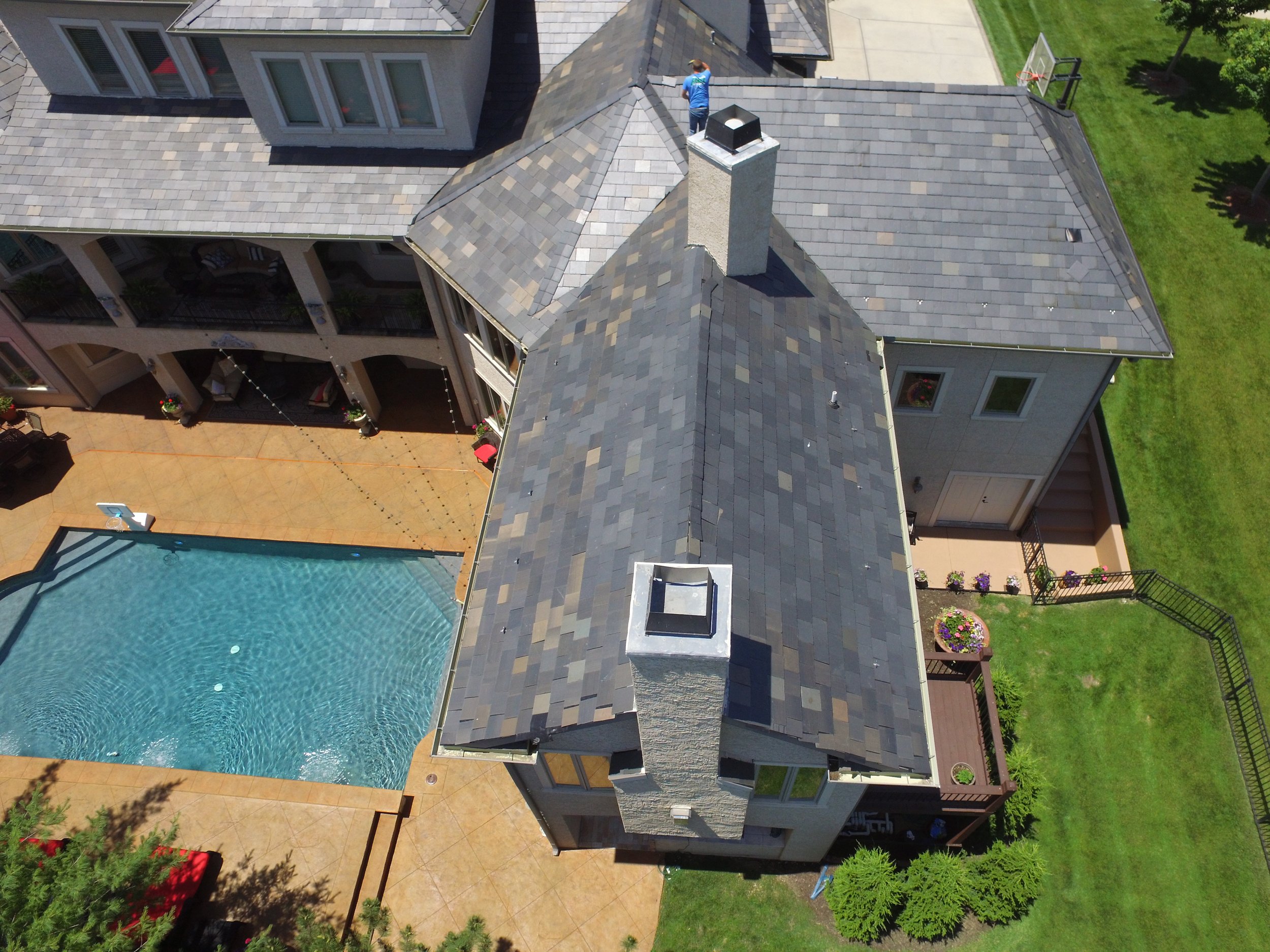
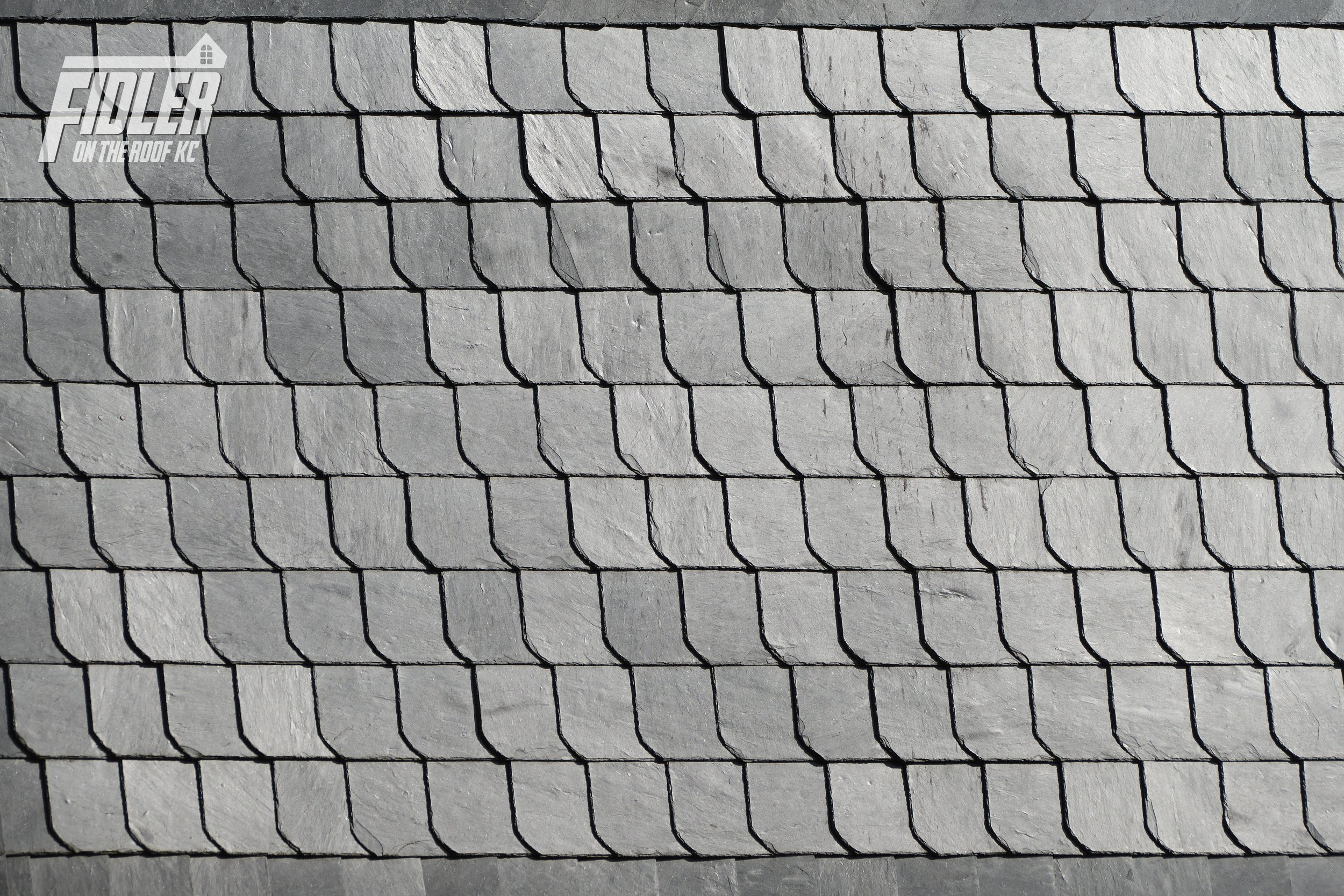
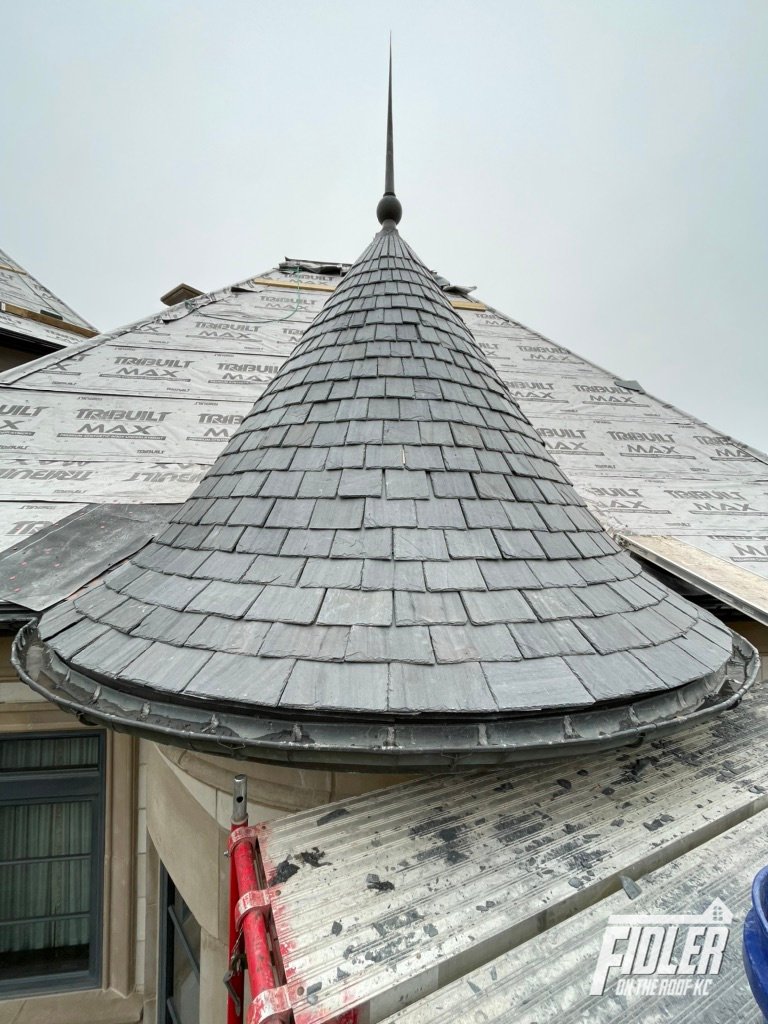
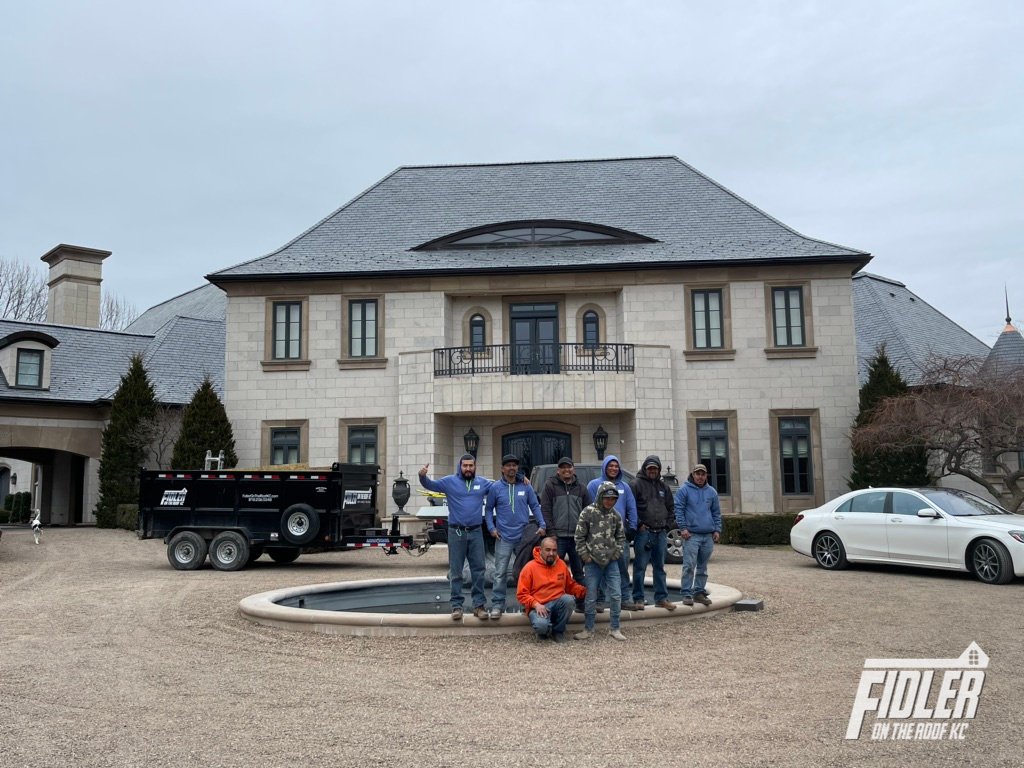
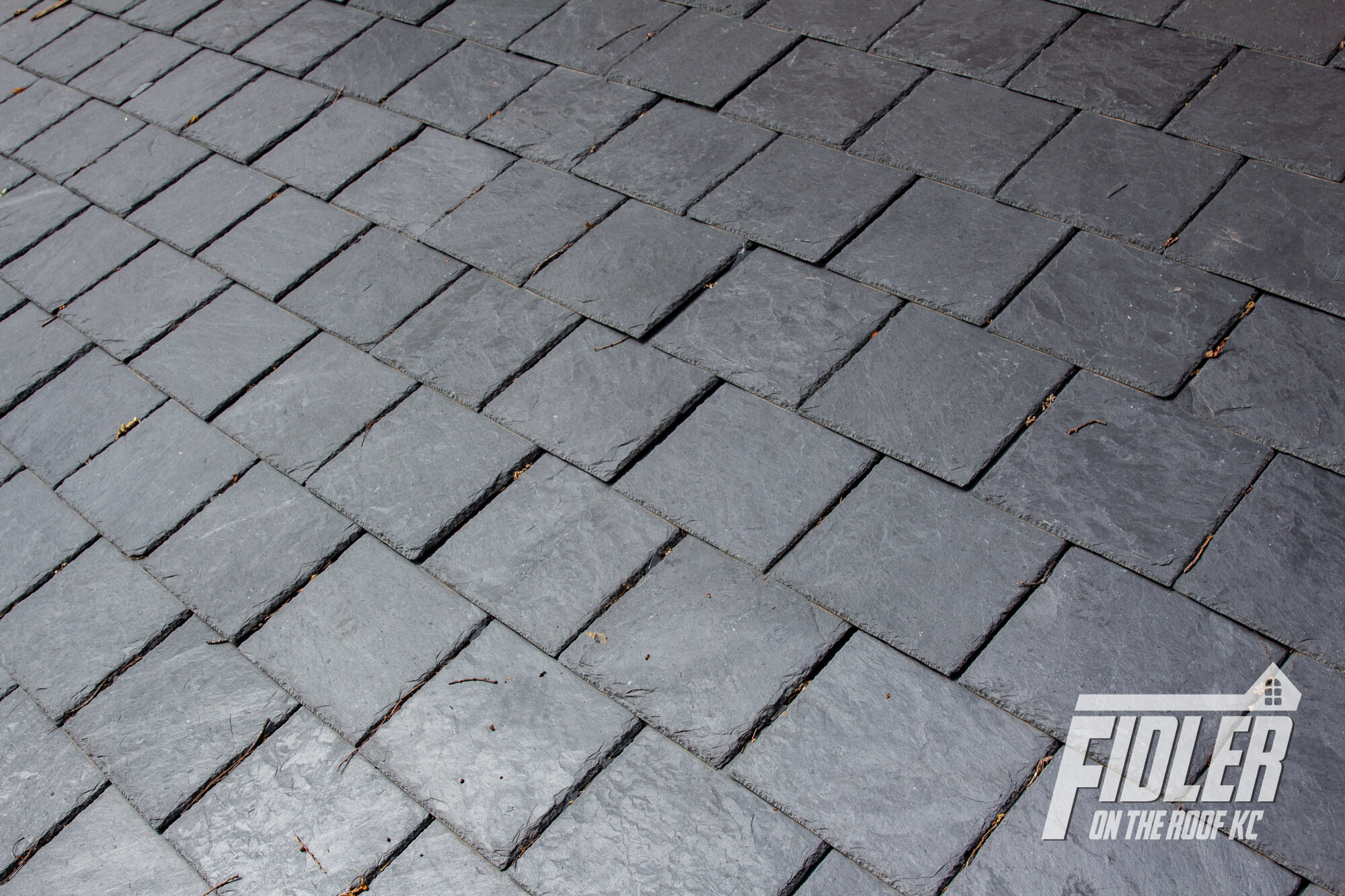
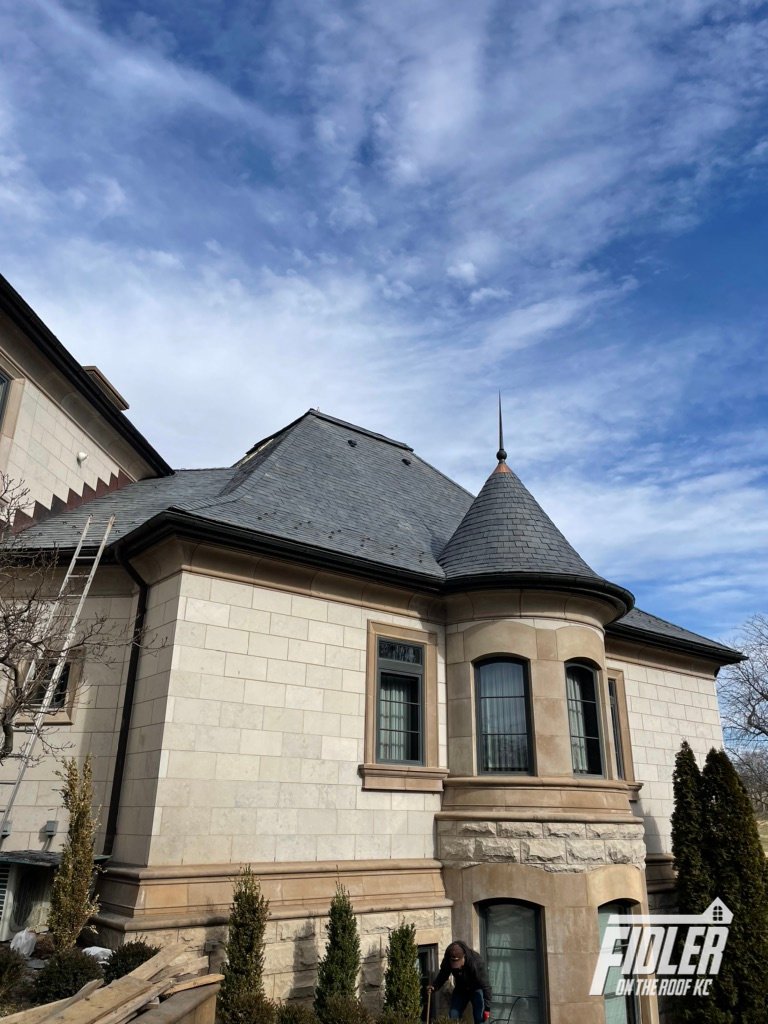
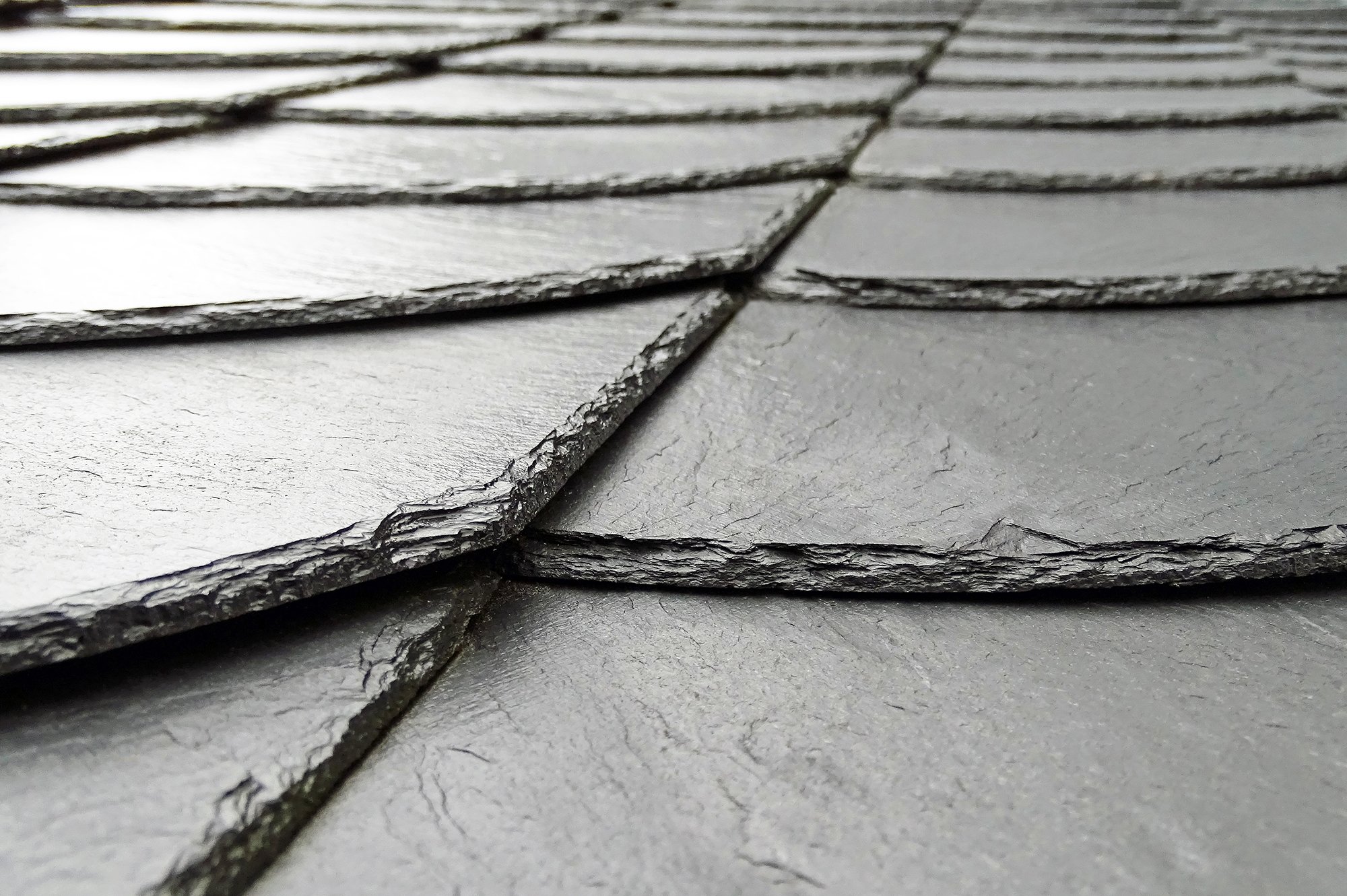
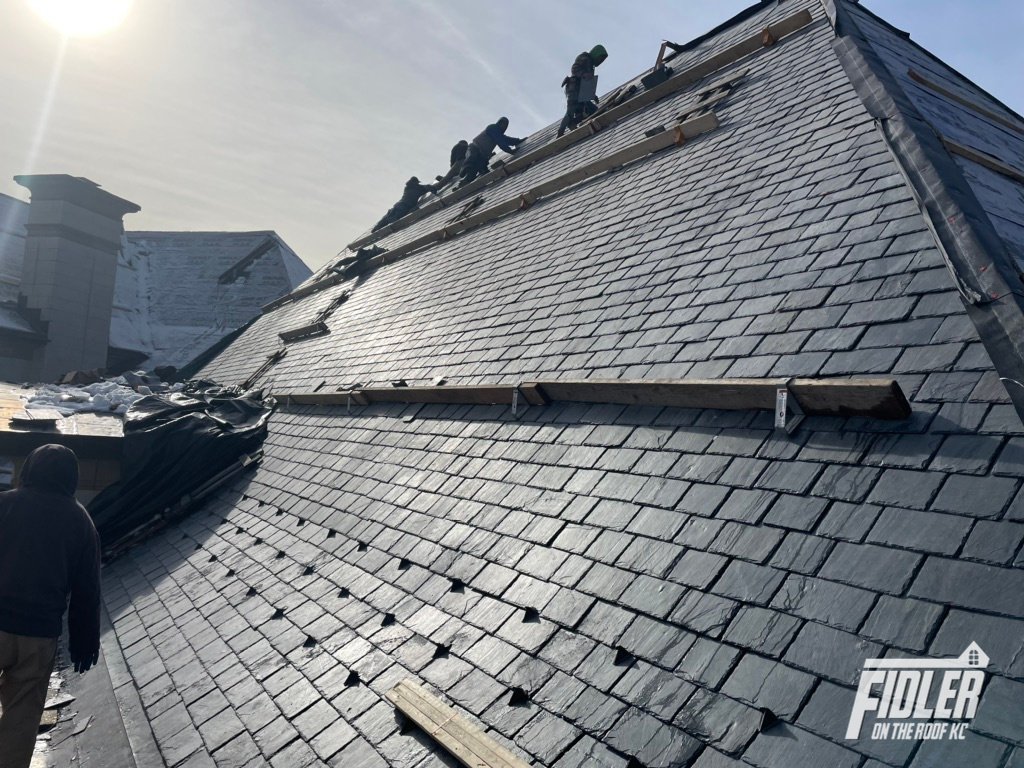
Standing Seam (Metal) Roofing
The words “metal roofing” can frequently conjure images of warehouses or storage facilities. While those are certainly a few applications, they’re not the only ones. Standing seam refers to a high-quality roofing system in which the fasteners are concealed from sight and, therefore, from the elements. Because the roofing is attached with clamps, there are no nail or staple holes.
Benefits of standing seam metal roofing
The clean, modern design of standing seam roofs includes a variety of colors and surface textures.
Standing seam metal roofs are low maintenance and energy efficient.
Standing seam roofs are durable and estimated to last at least 50 years. They’re also fire resistant.
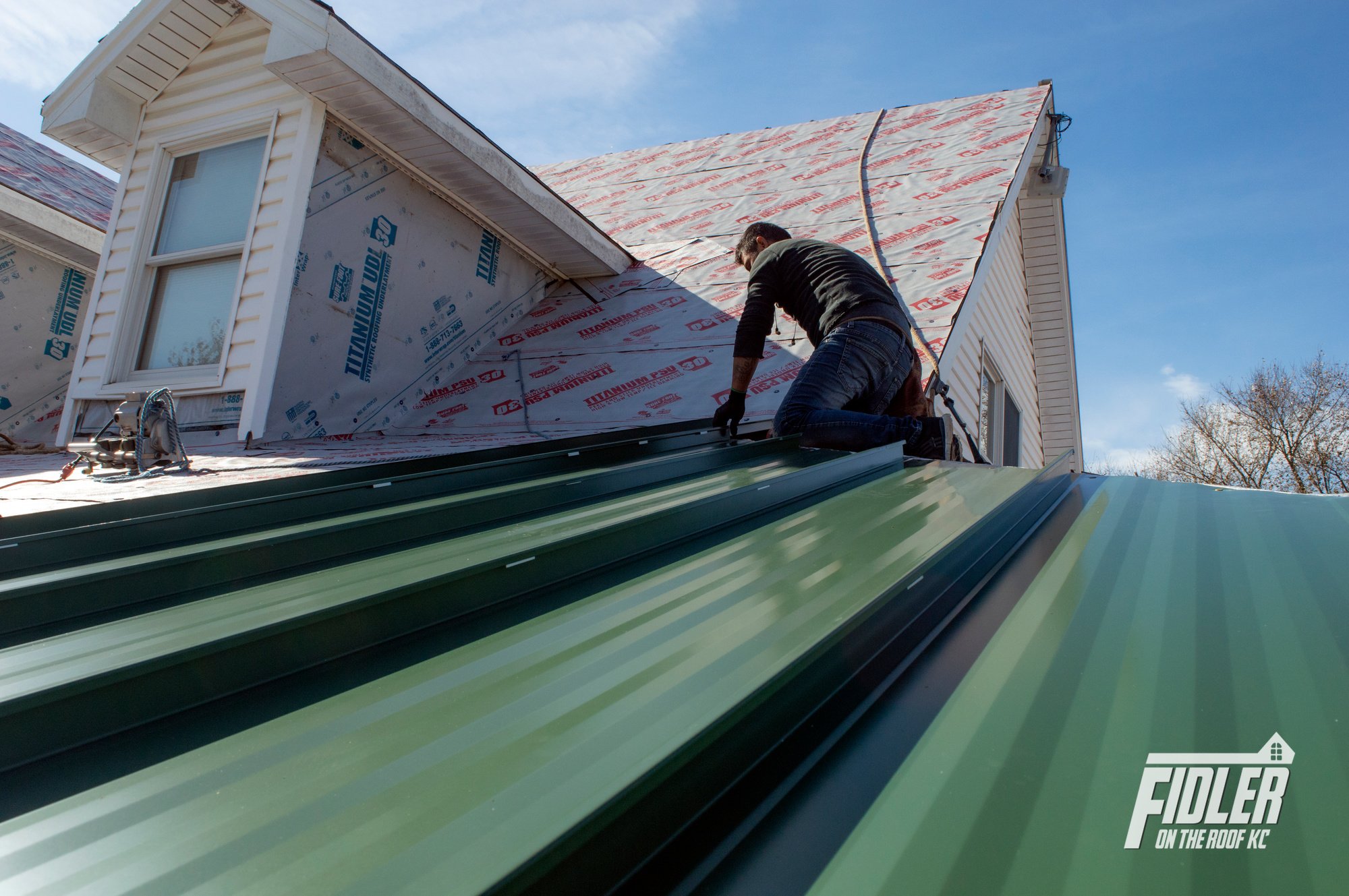
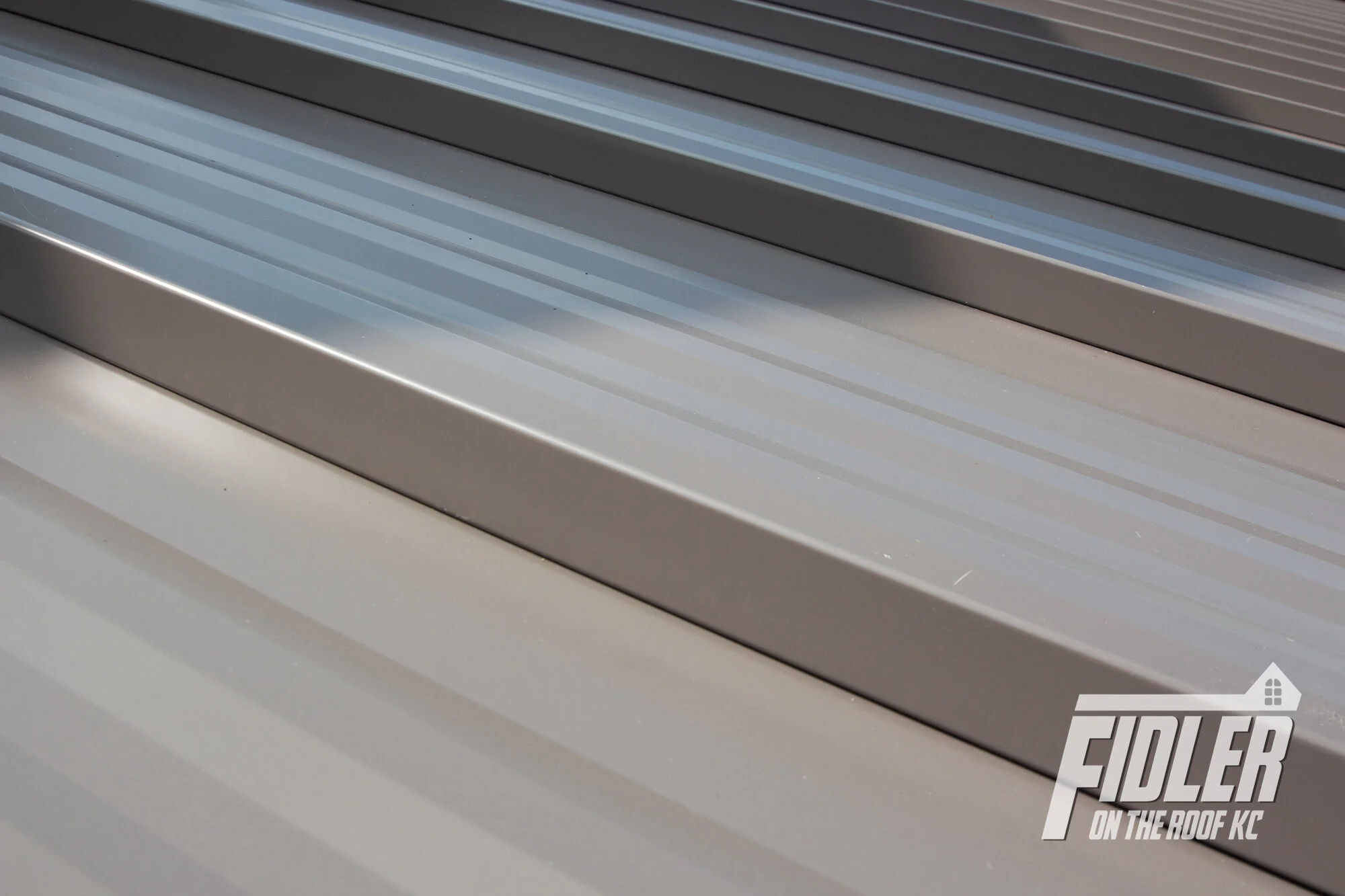
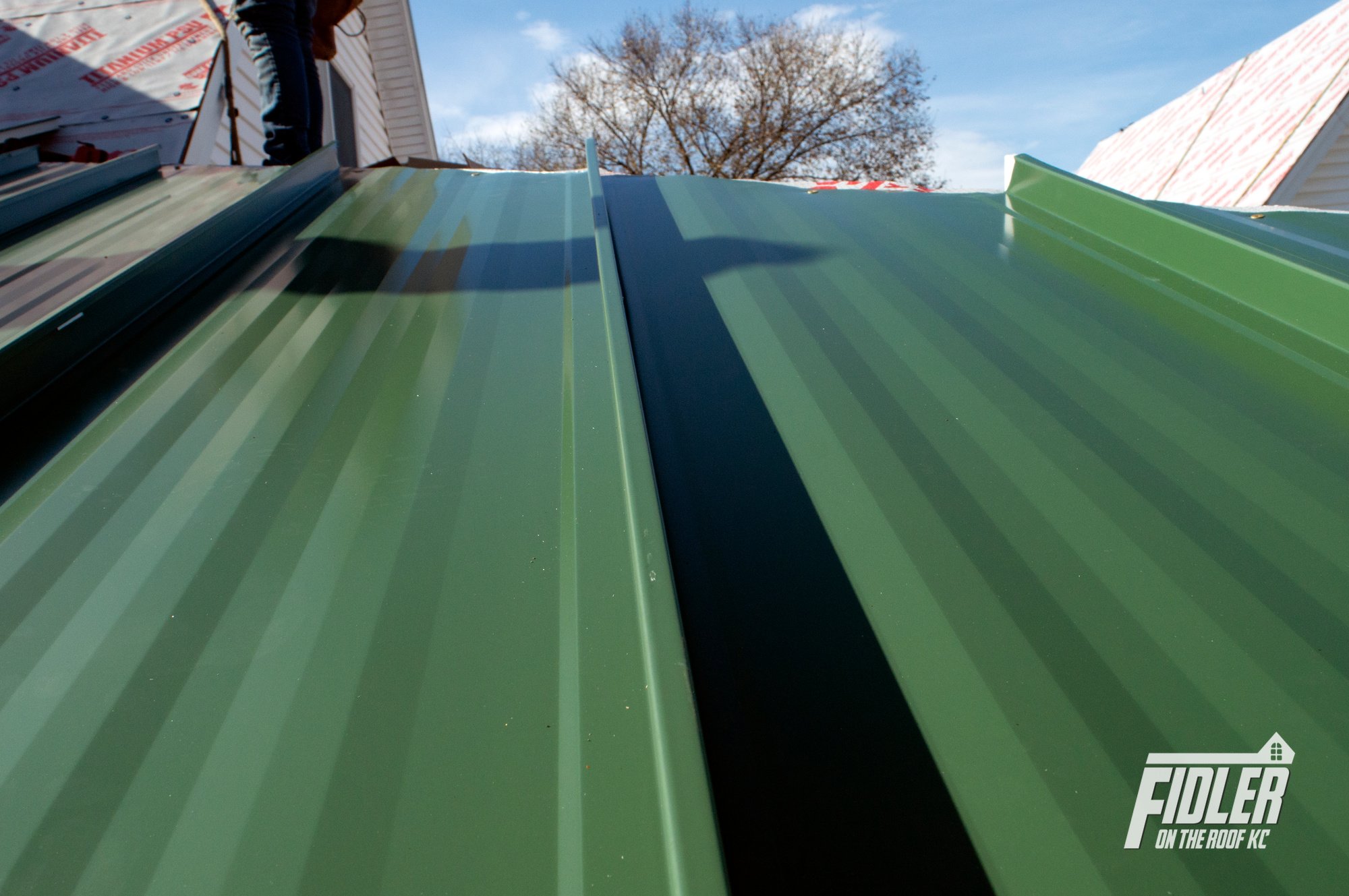
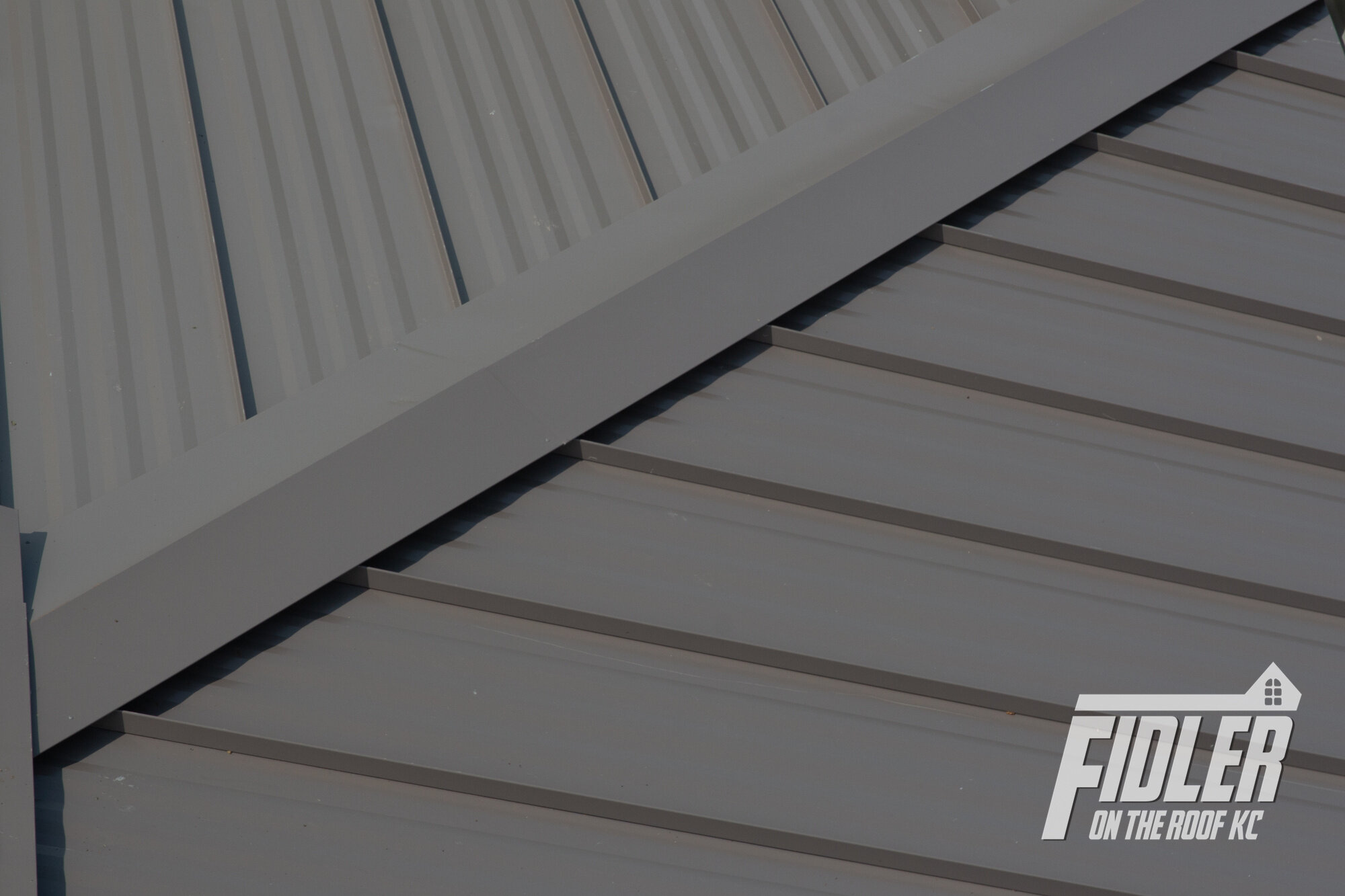
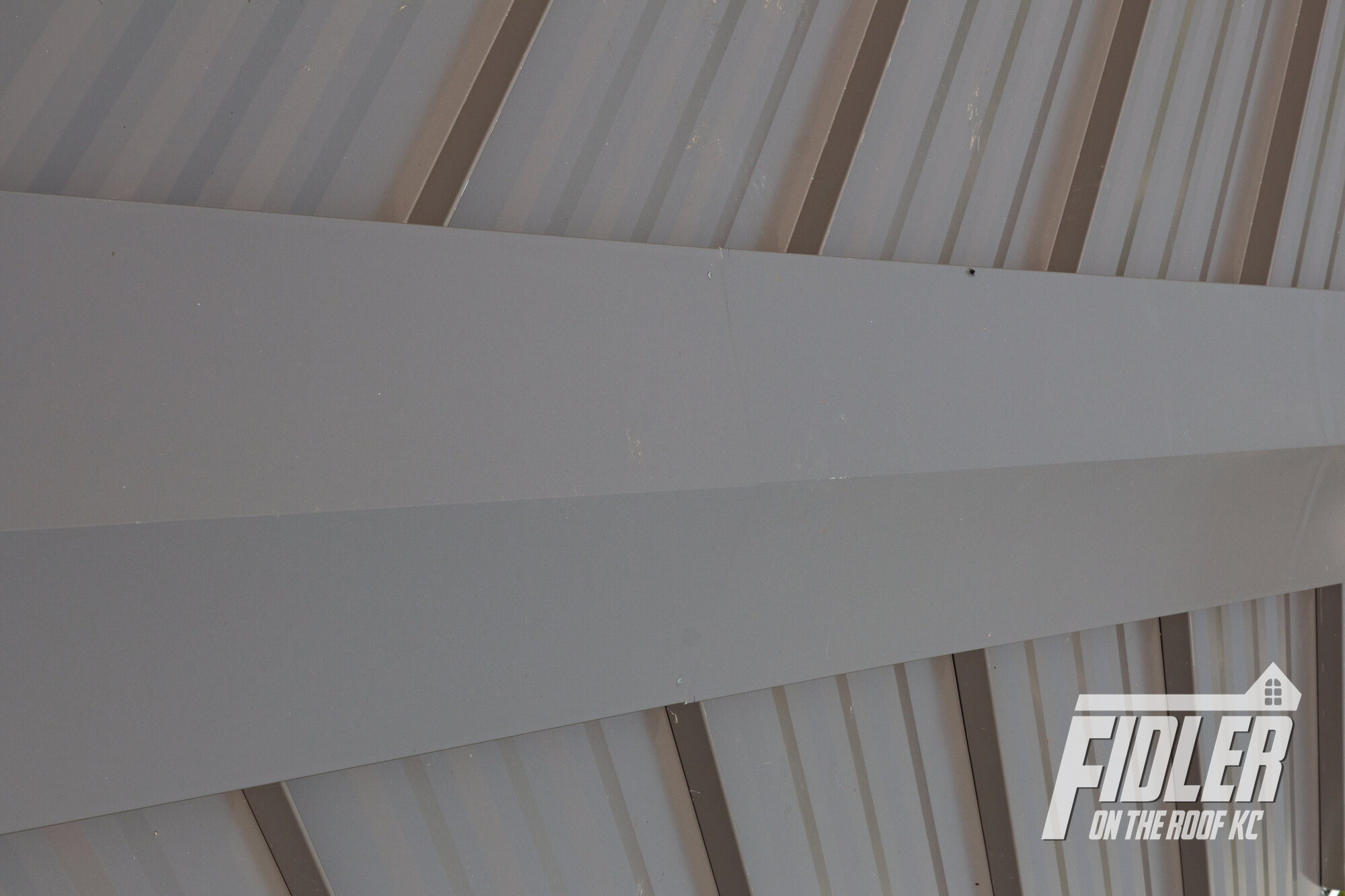

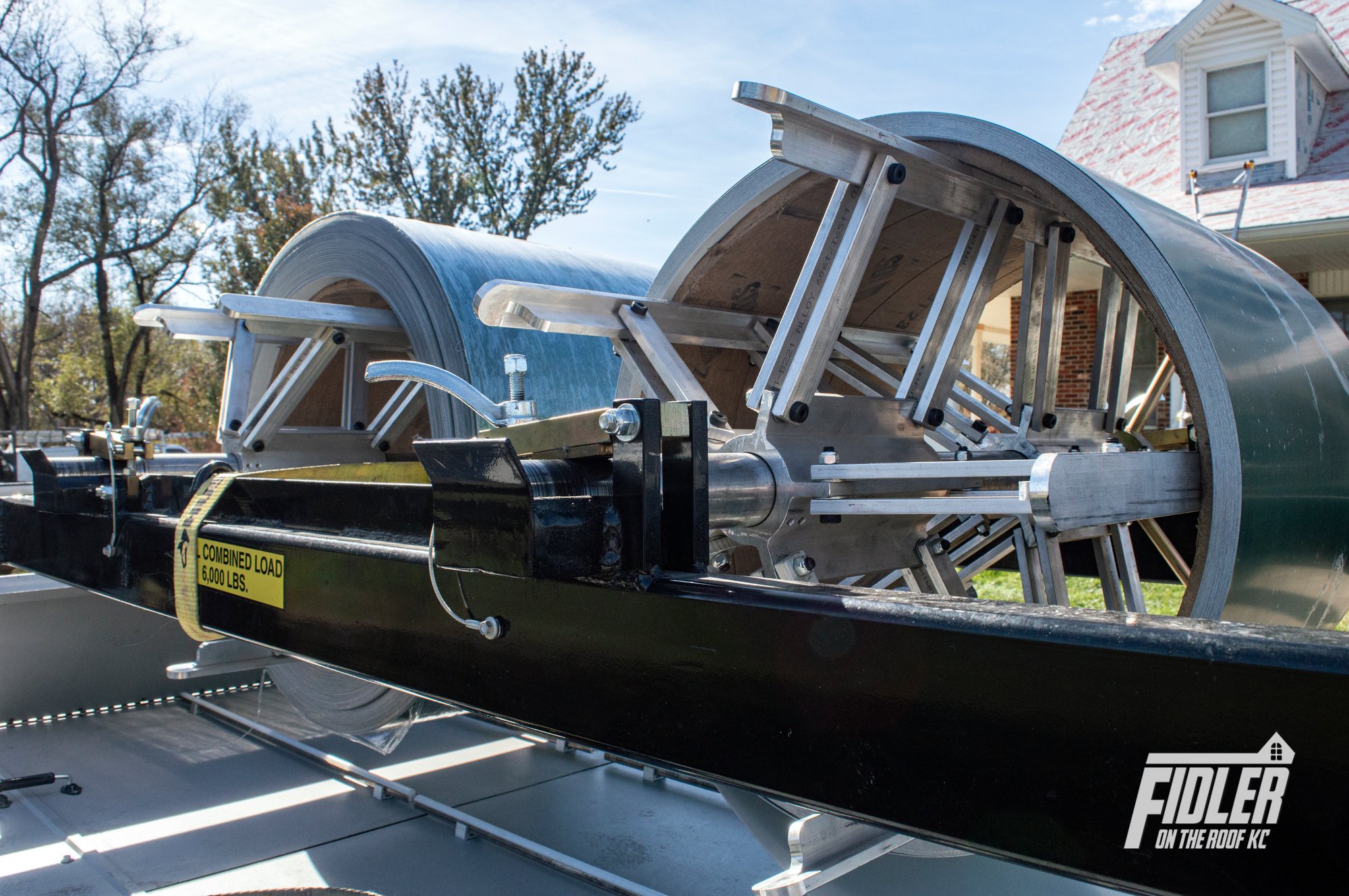
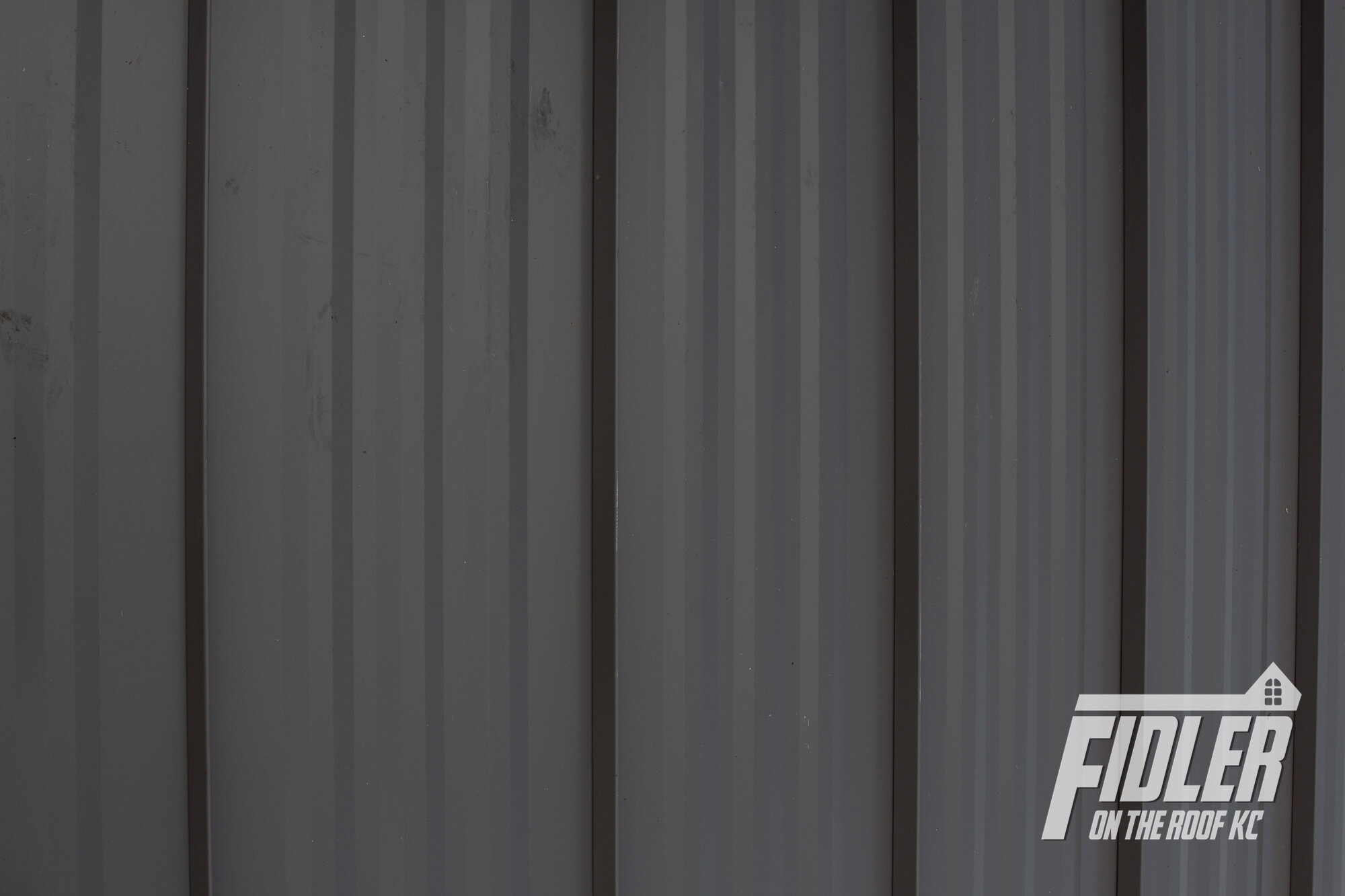
Stone coated steel roofing
Stone coated steel is exactly as it sounds: A stone finish is permanently adhered to a metal base. This is an excellent roofing surface for homes that are not structurally engineered to support an actual stone, slate or tile roof. This roofing material allows the homeowner to achieve the look and feel of a slate roof. Because it is engineered and manufactured, there are numerous possibilities for appearance, color and texture.
Benefits of stone-coated steel roofing
It can be used on any home and has no structural requirements. Actual stone-based products, such as concrete, clay and slate, require a roof to be structurally engineered to support their weight.
A stone coated steel roof is exceptionally durable. The lifespan of steel roofs is about double that of composition roofing.
Stone coated steel roofing is low maintenance, energy efficient and fire resistant.
Stone coated steel roofs can be customized to a wide variety of colors and styles. They “pop” with curb appeal.
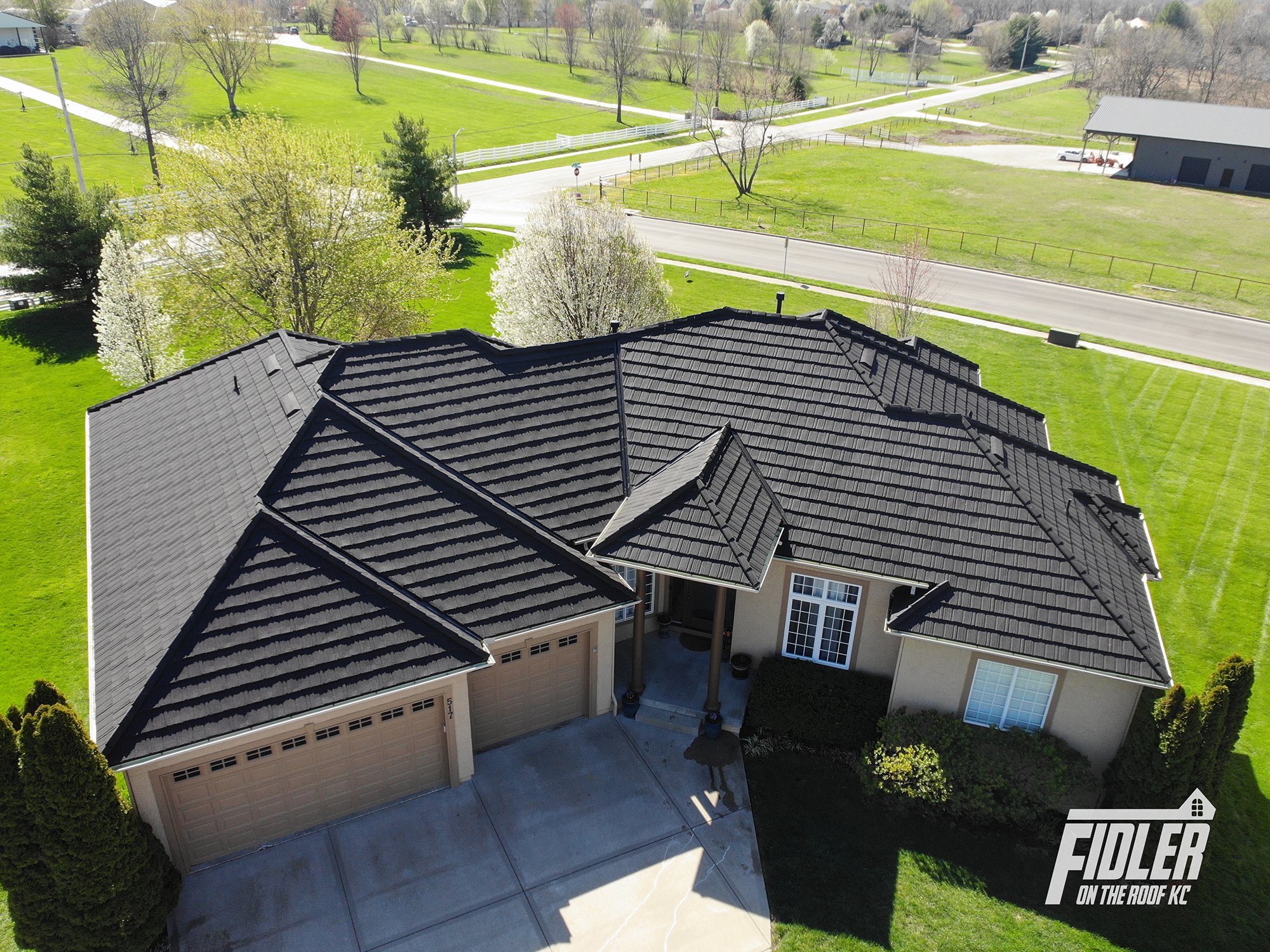
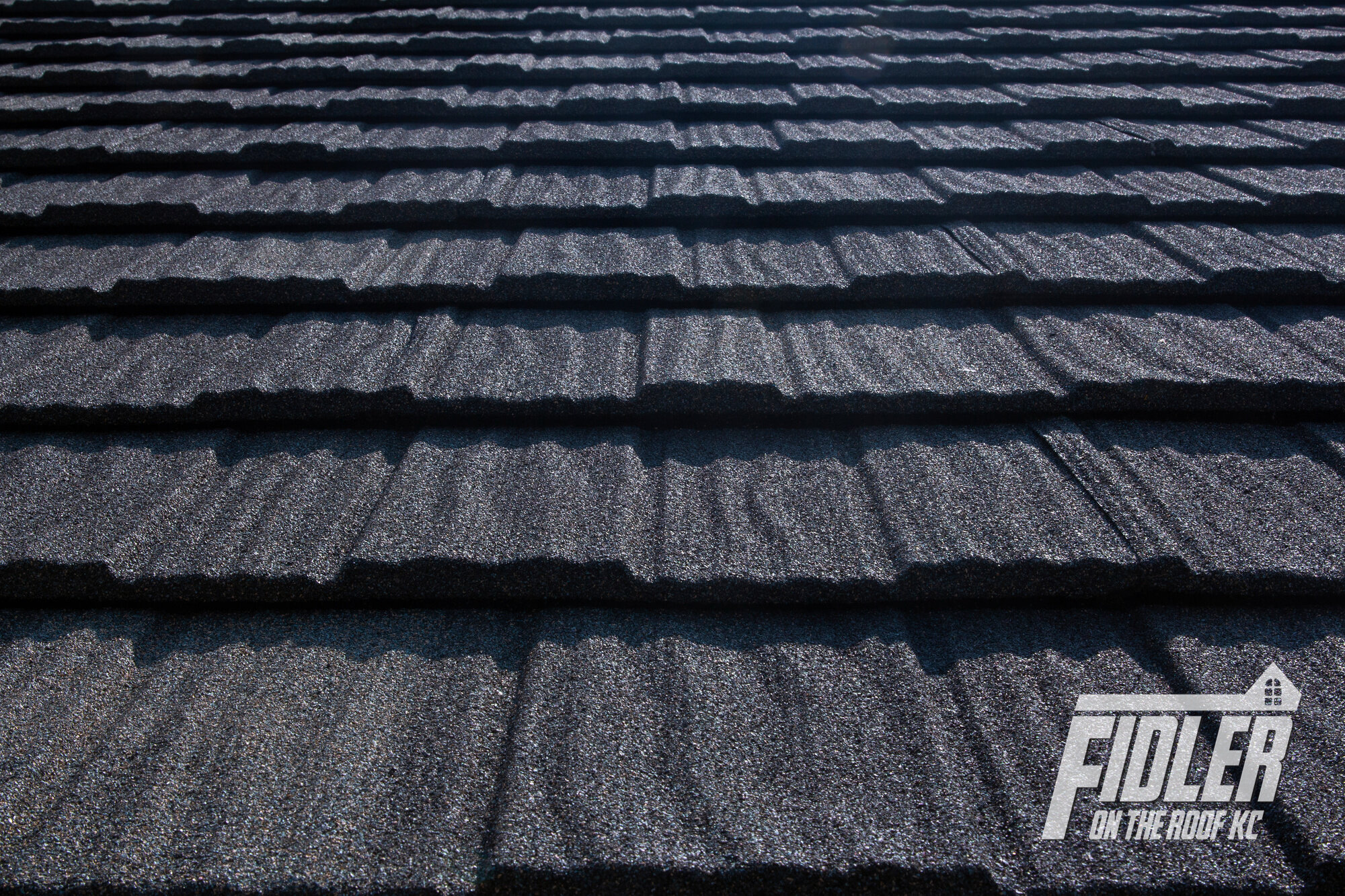
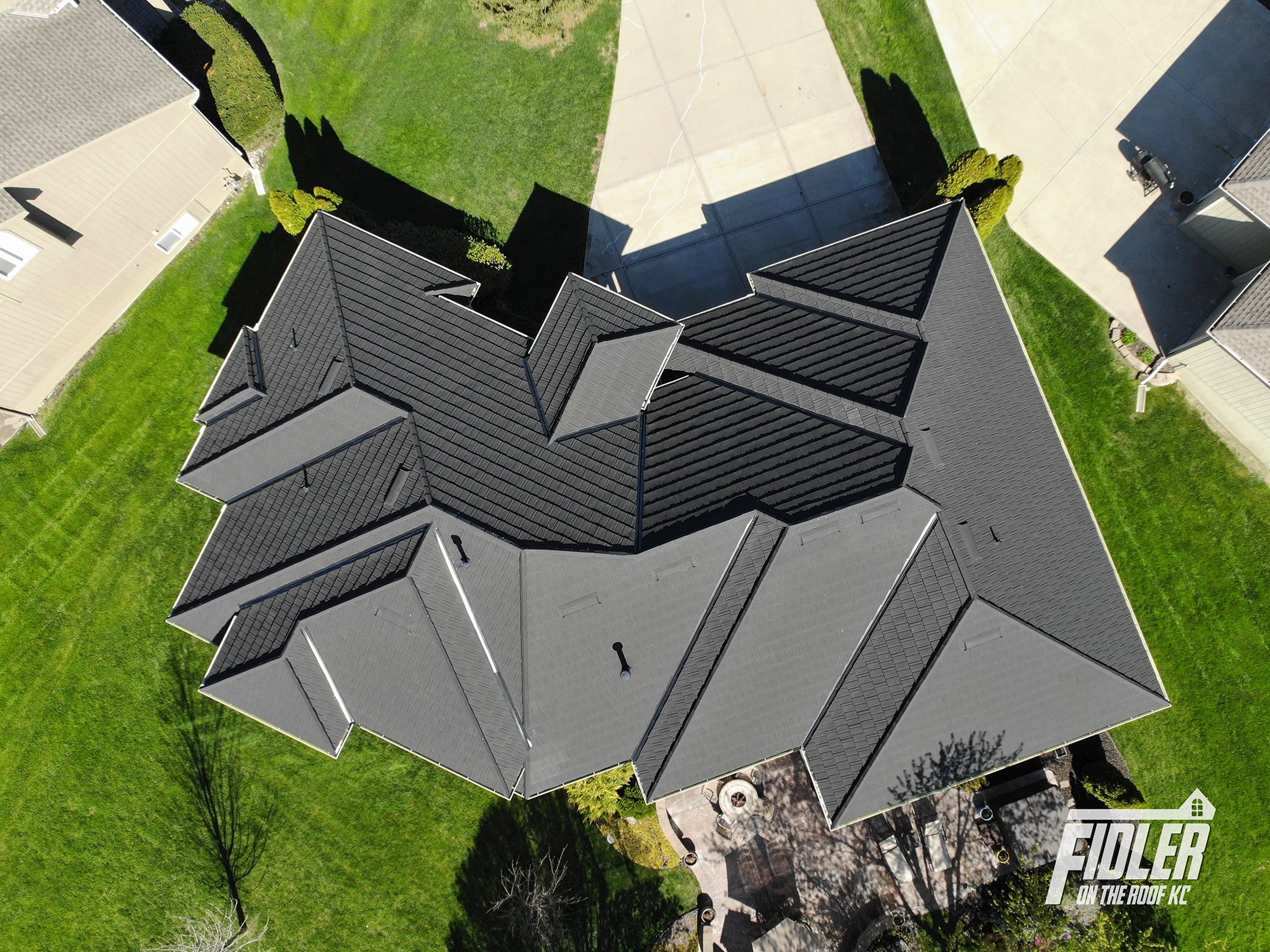
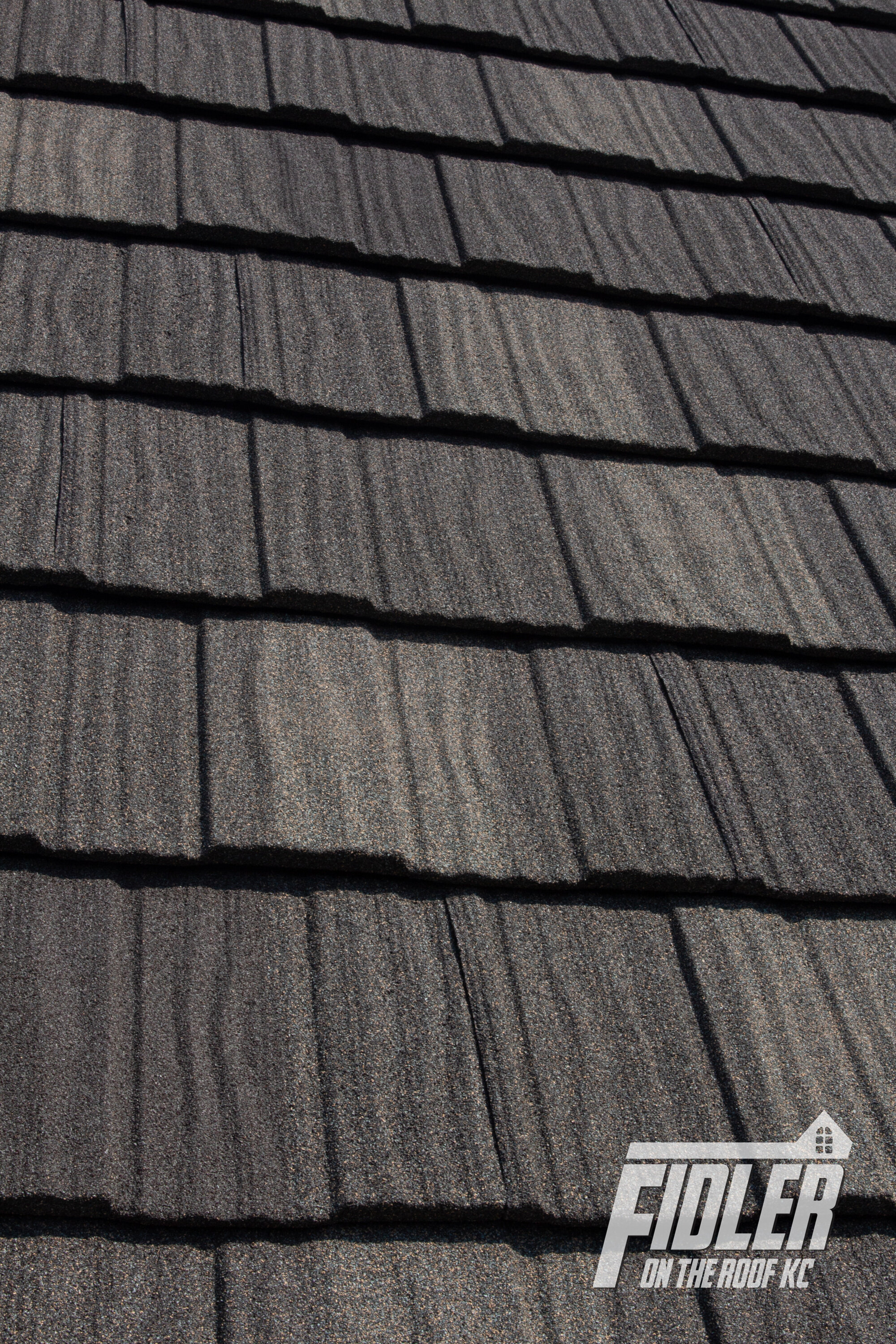
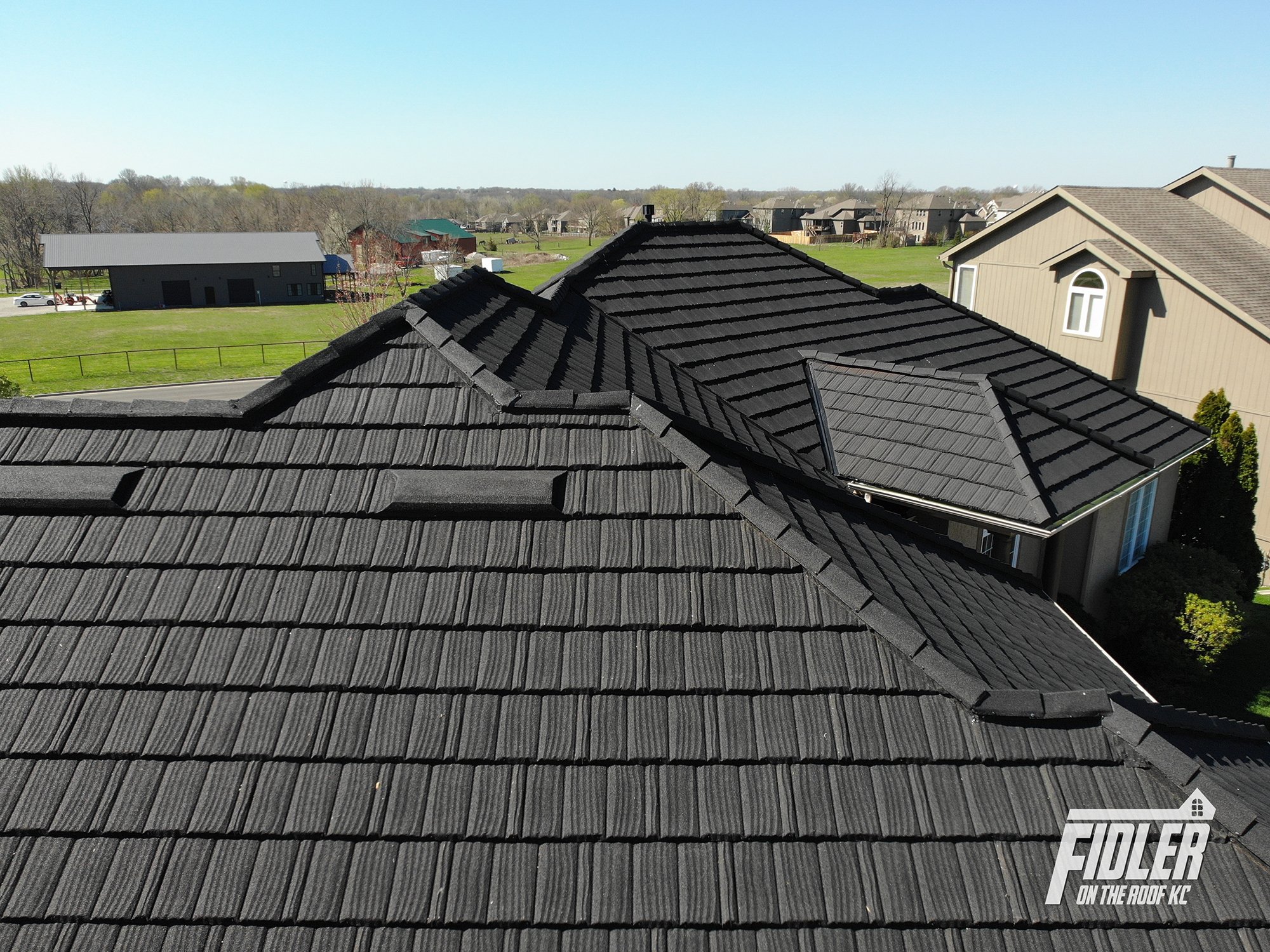
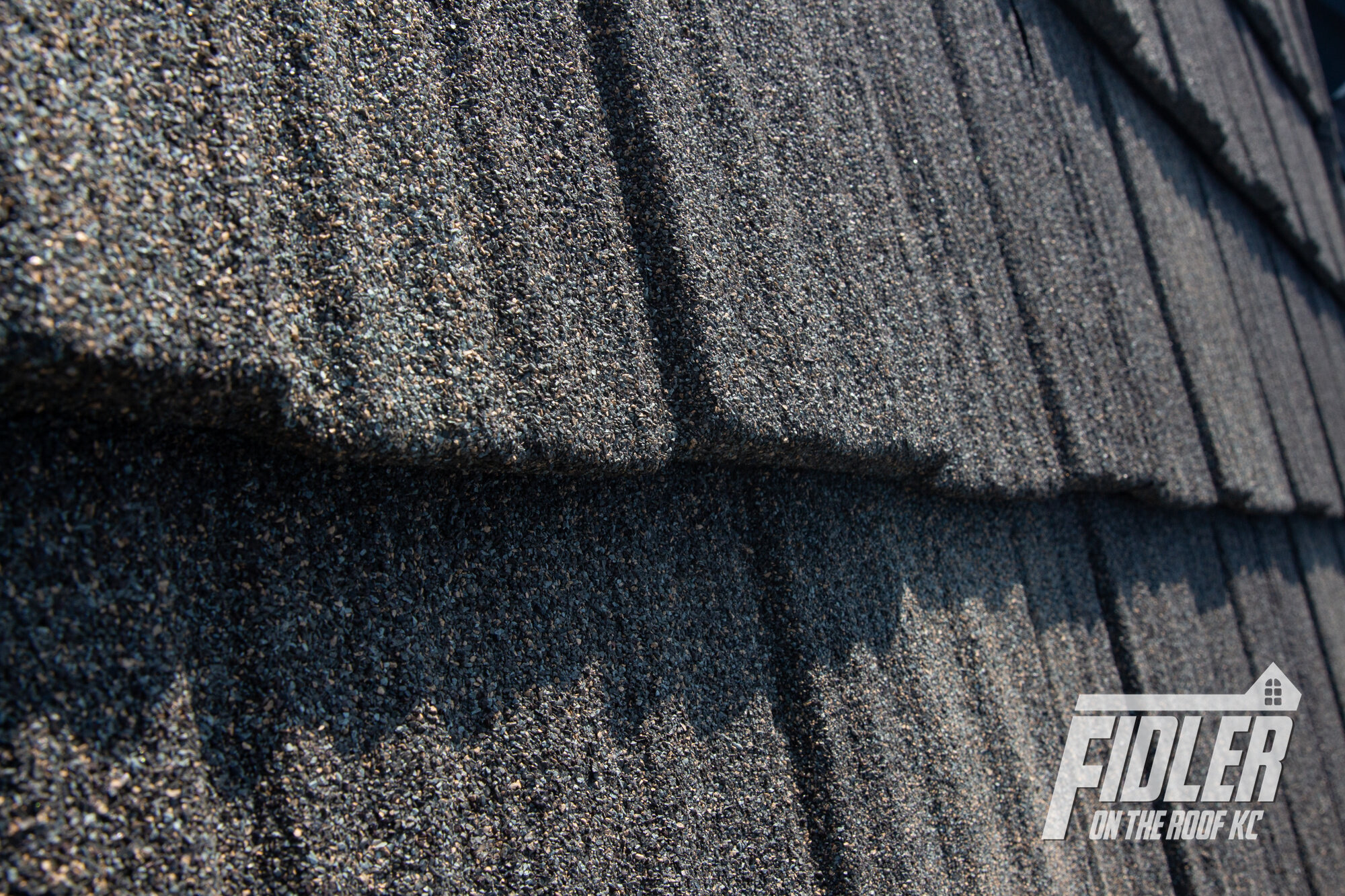
TPO commercial roofing
TPO stands for thermoplastic polyolefin, a manufactured surface usually installed on commercial and institutional buildings. Light TPO colors reduce heat and energy costs because of their reflective properties. This type of roofing is produced in large, rolled sheets and is ideal for flat surfaces. Seams are melded and sealed with heat. TPO is installed over an insulated membrane. In some instances, TPO may be used instead of a roof replacement. Contact us for details.
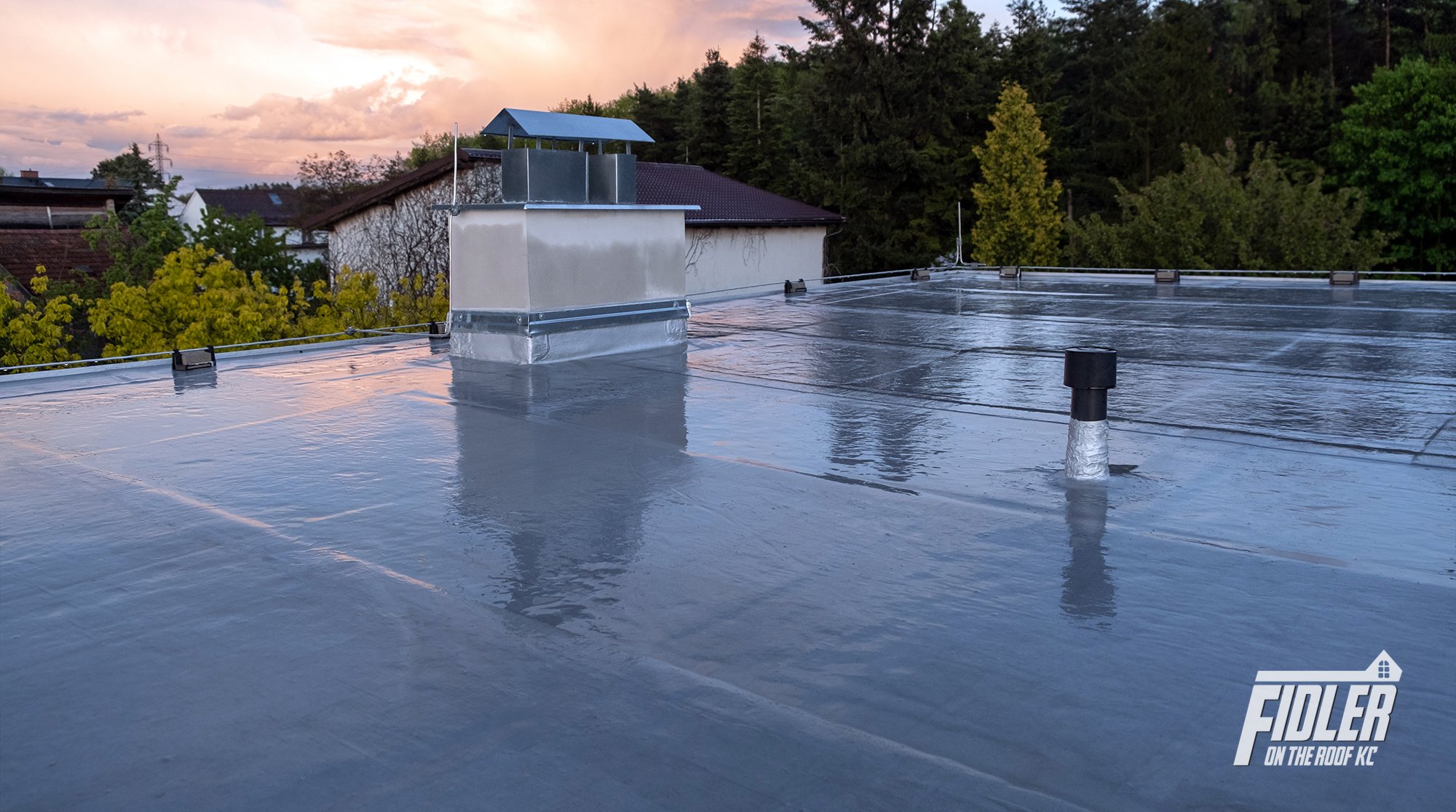
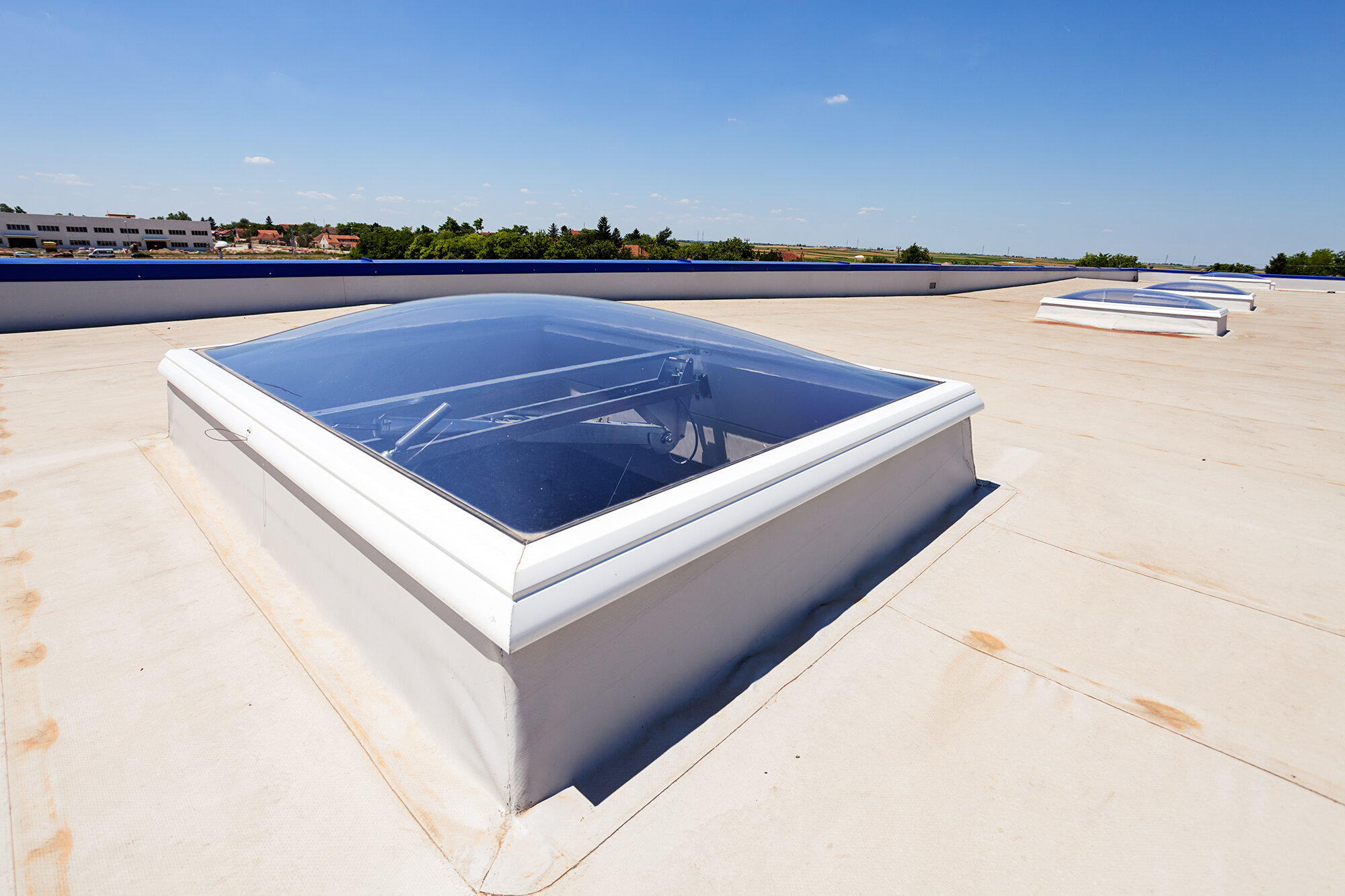
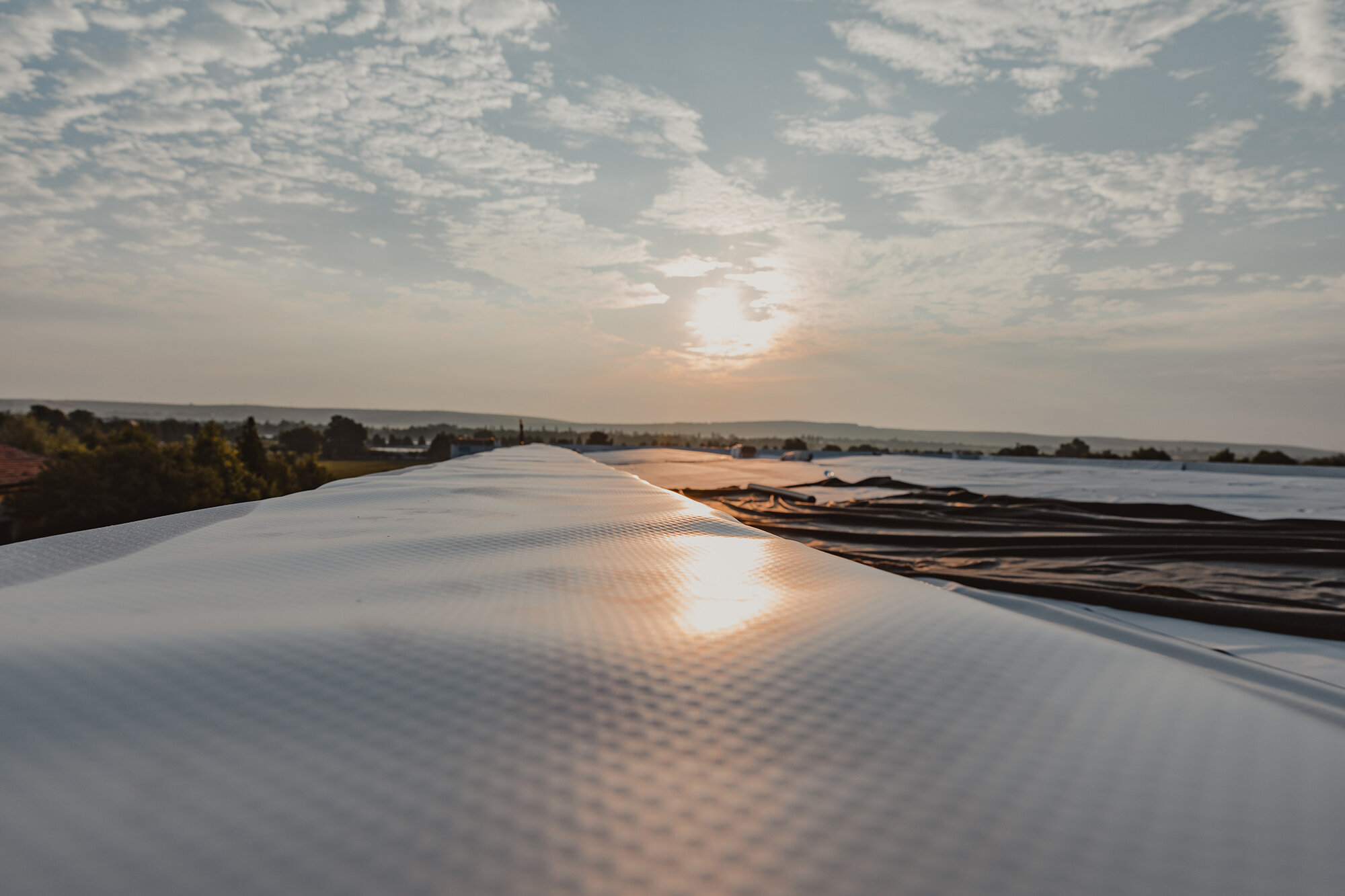
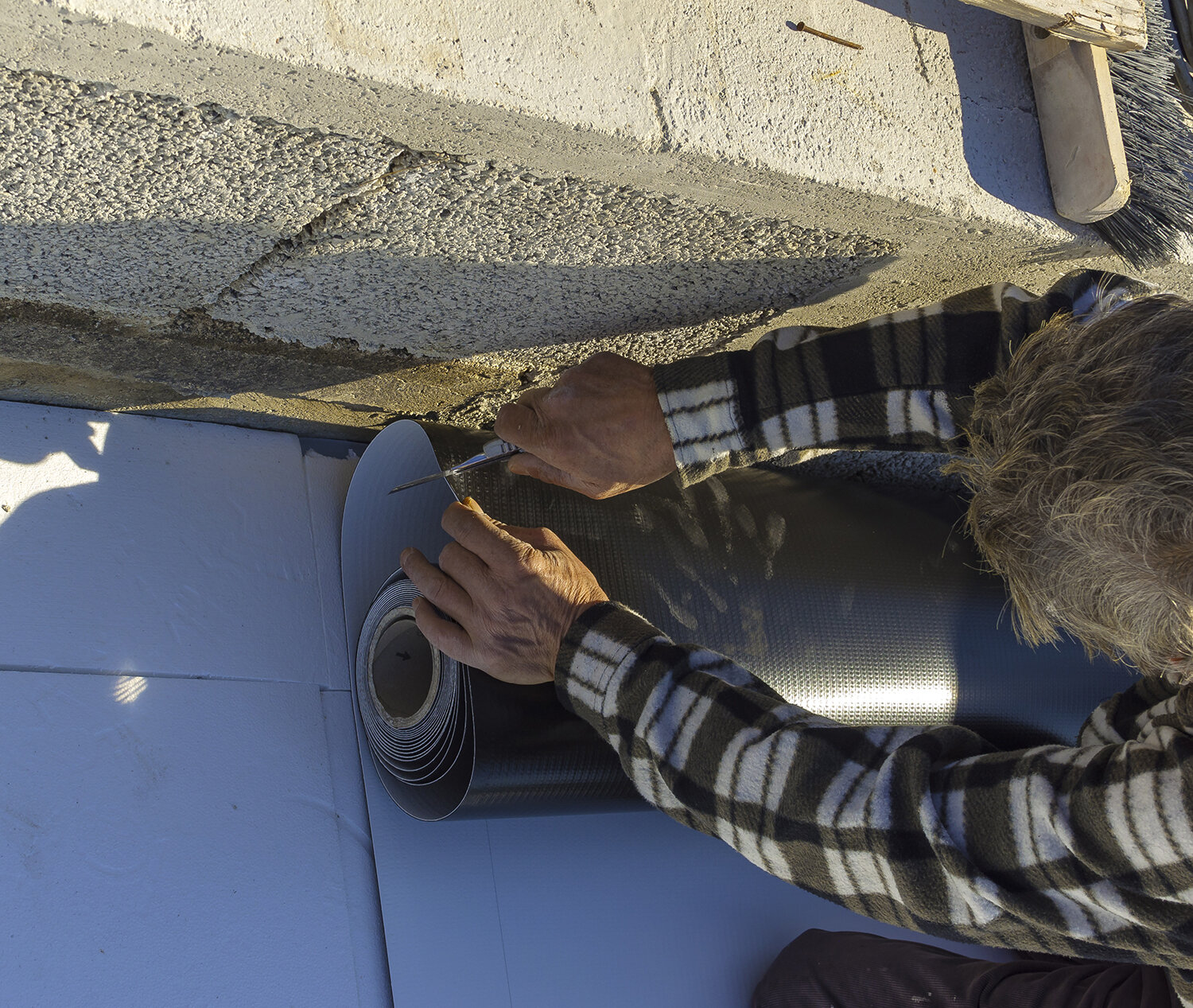
Shake Shingle roofing
“Shake” historically refers to thick, textured wooden shingles. Before modern techniques were invented, wooden shingles were sawed from a block of cedar; shake shingles were split off the block. The splitting action created the fibrous texture known as shake. Today, the process is automated during manufacturing. Now, as then, wood shingles appear smooth, while shake shingles have a rustic, organic appearance. An alternative to wood is an equally appealing synthetic shake shingle. In addition to possessing natural beauty, shake shingles – whether wood or synthetic – are thick and durable.
Benefits of wood shake roofing
Wood shake provides the rustic, organic beauty of cedar wood. There’s nothing quite like it.
Wood shake is eco-friendly, made from renewable resources and recyclable.
Wood shake is durable and stands up to high winds and the elements and can last decades with proper maintenance.
An alternative, synthetic wood shake, provides the appearance of wood in a highly-durable manufactured product.
